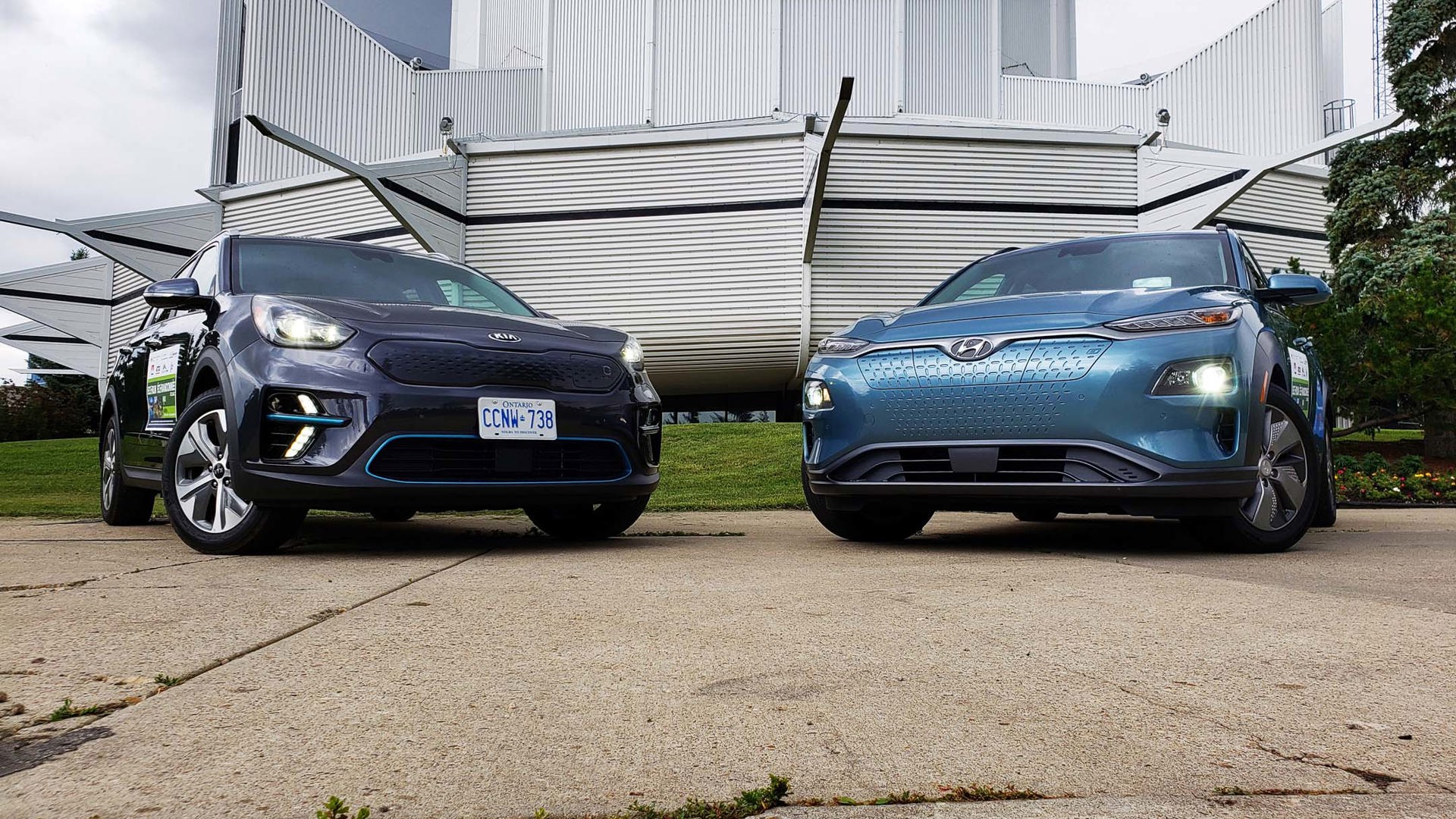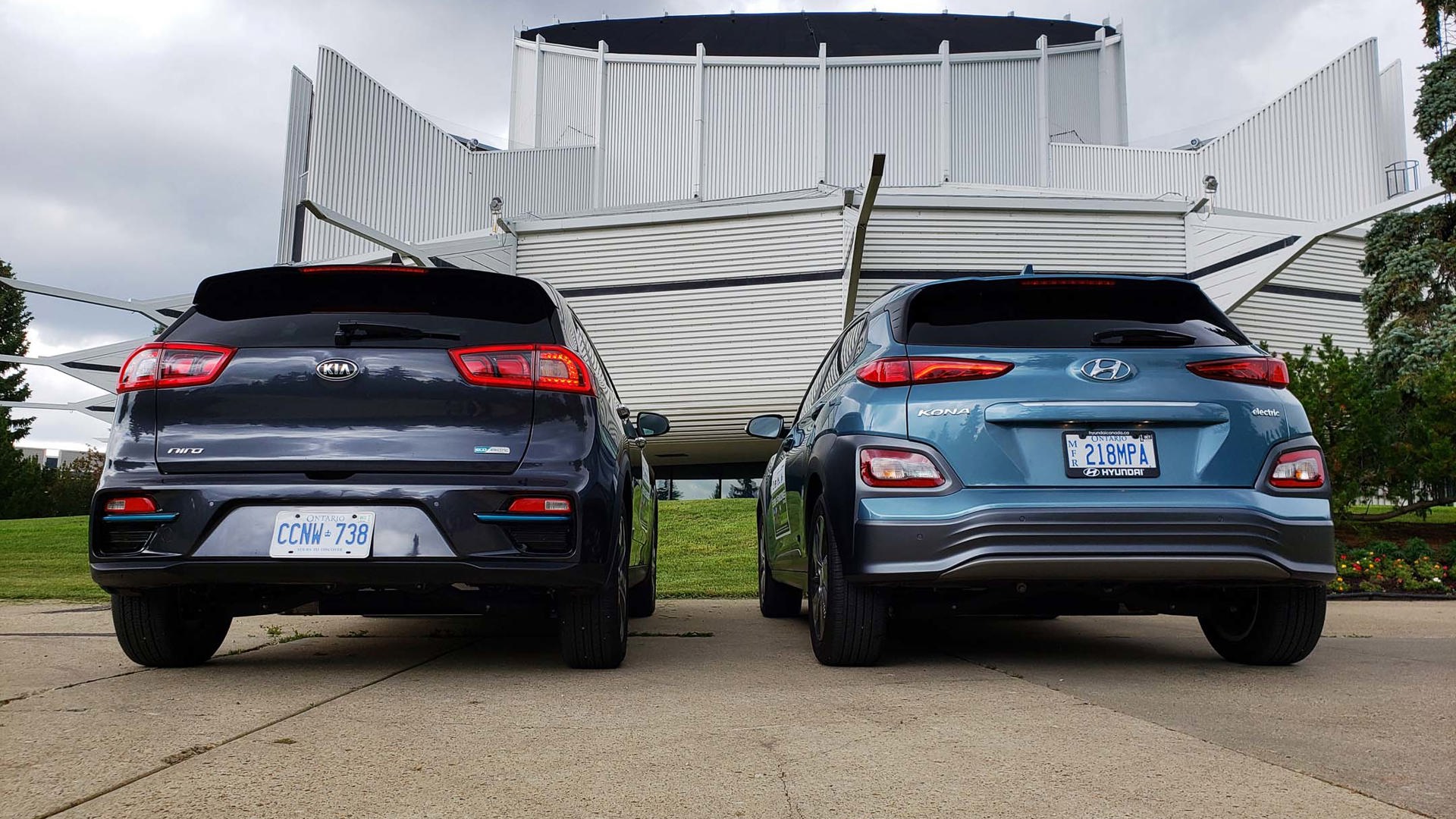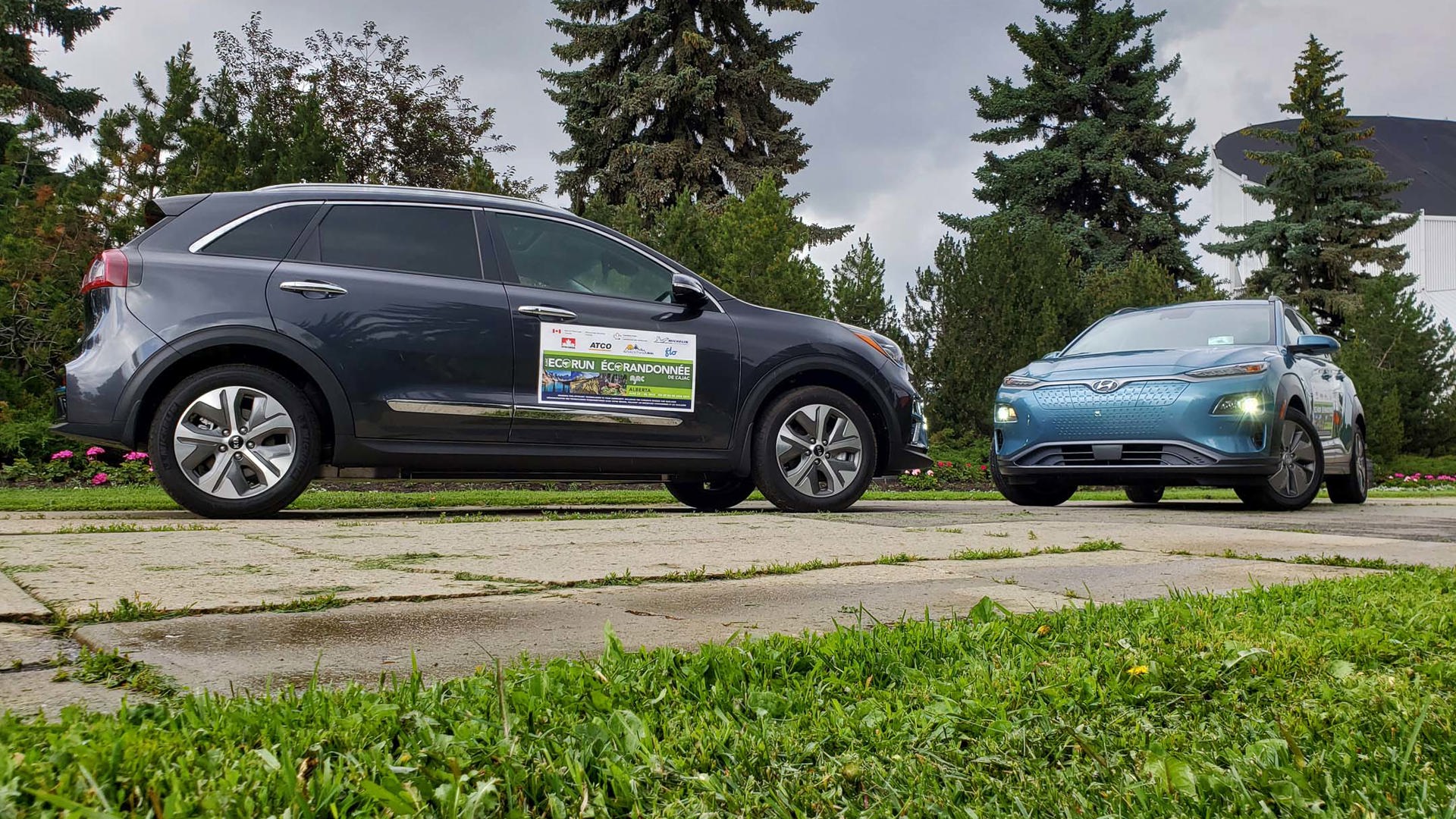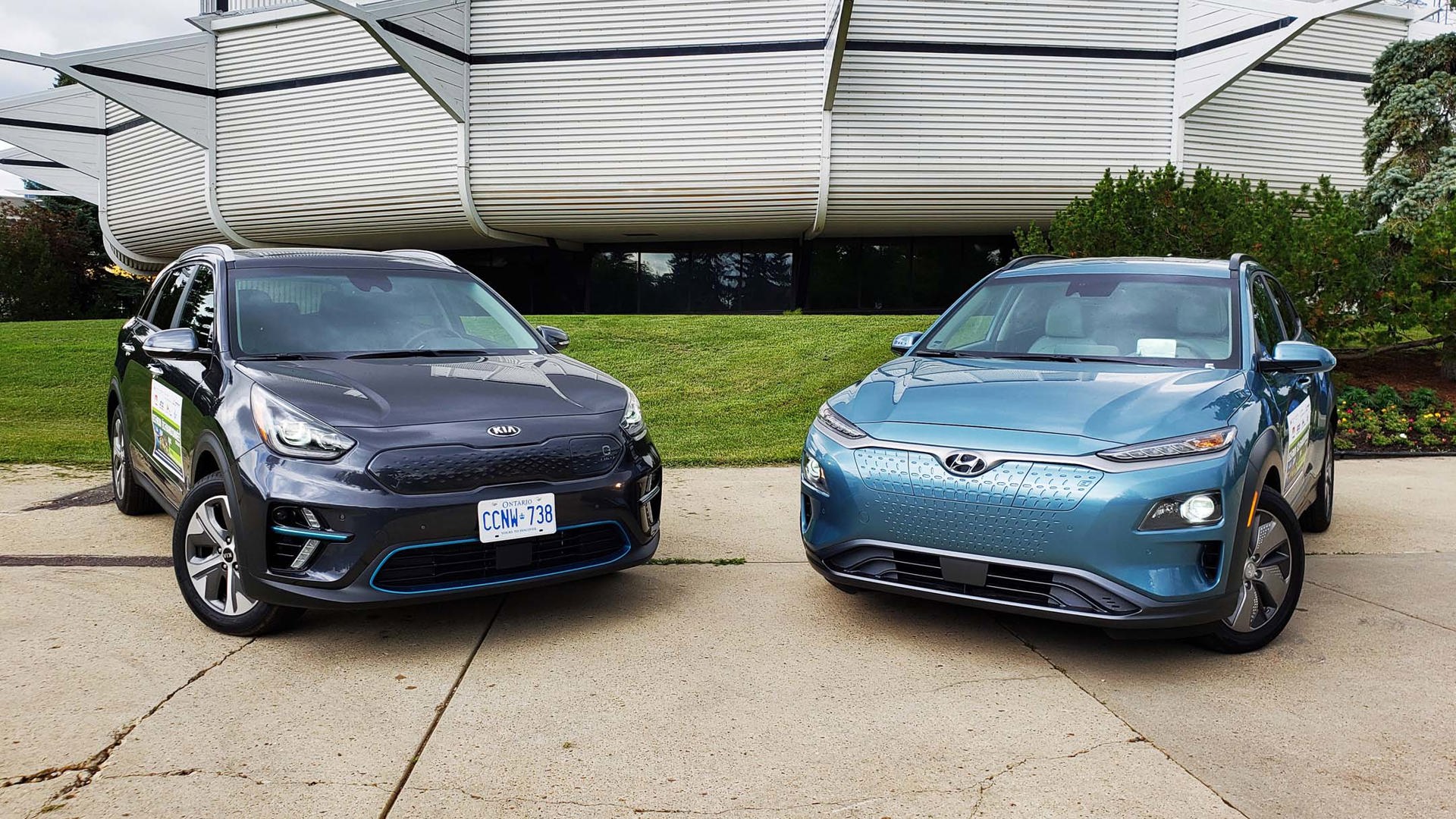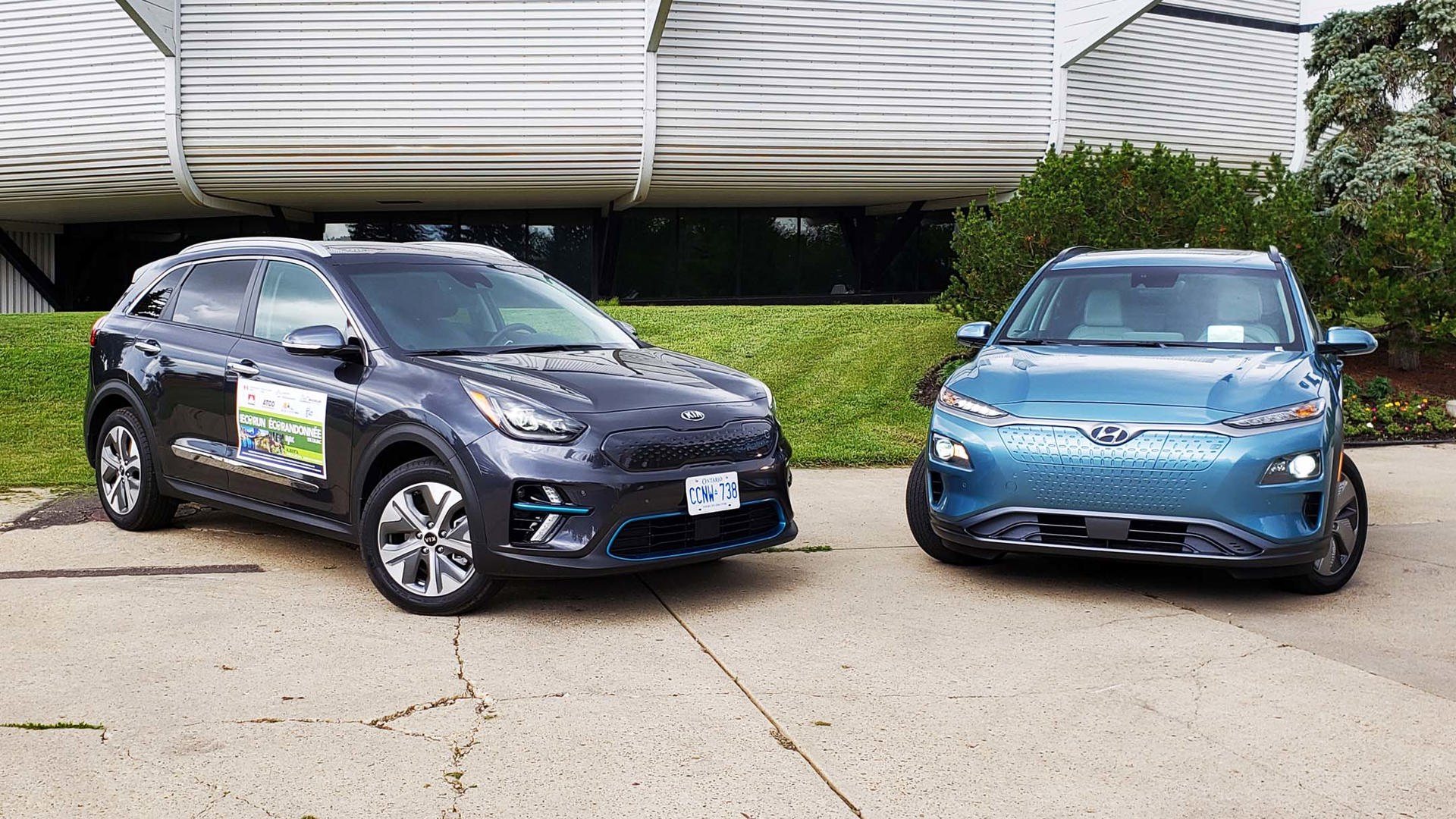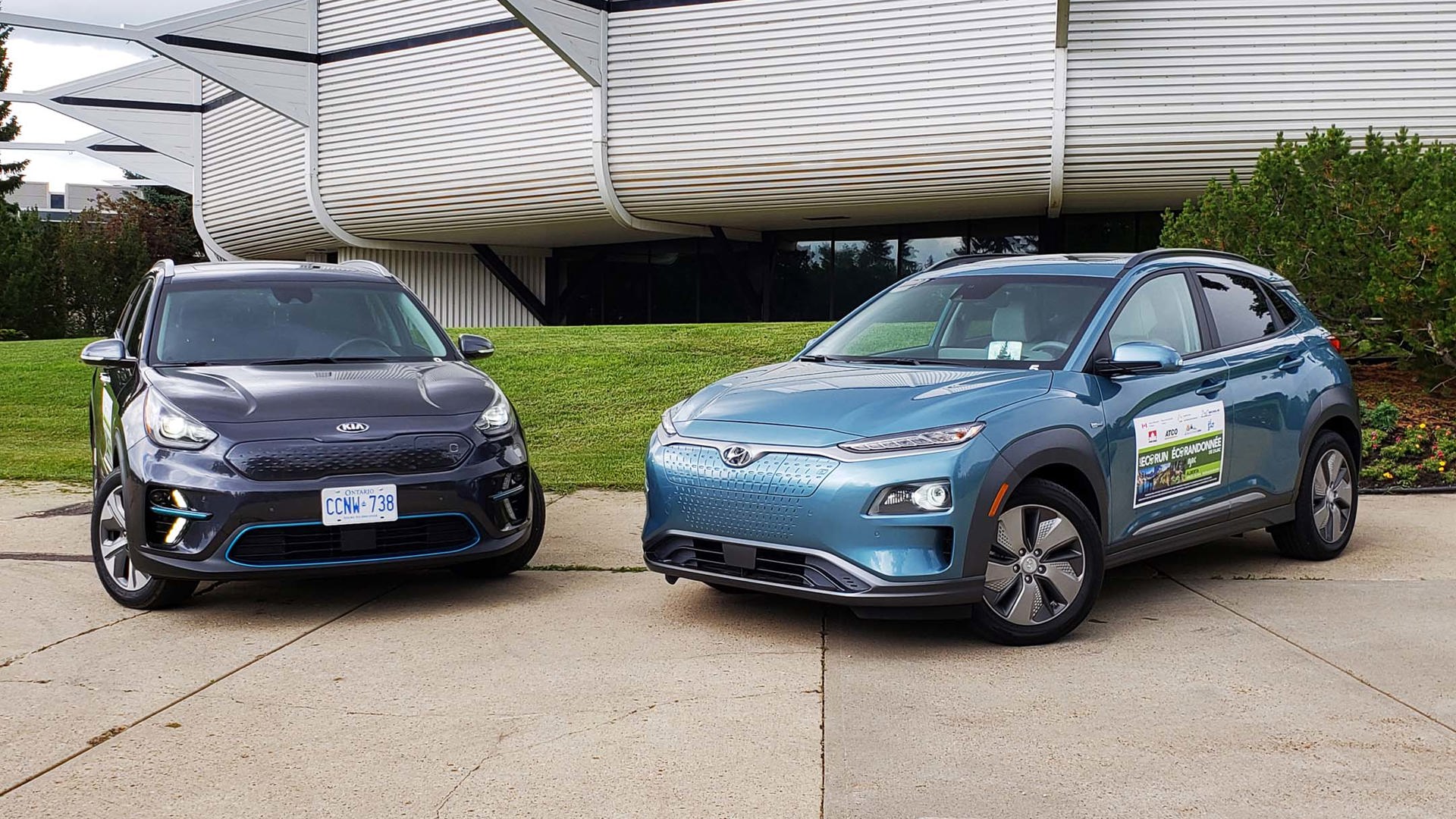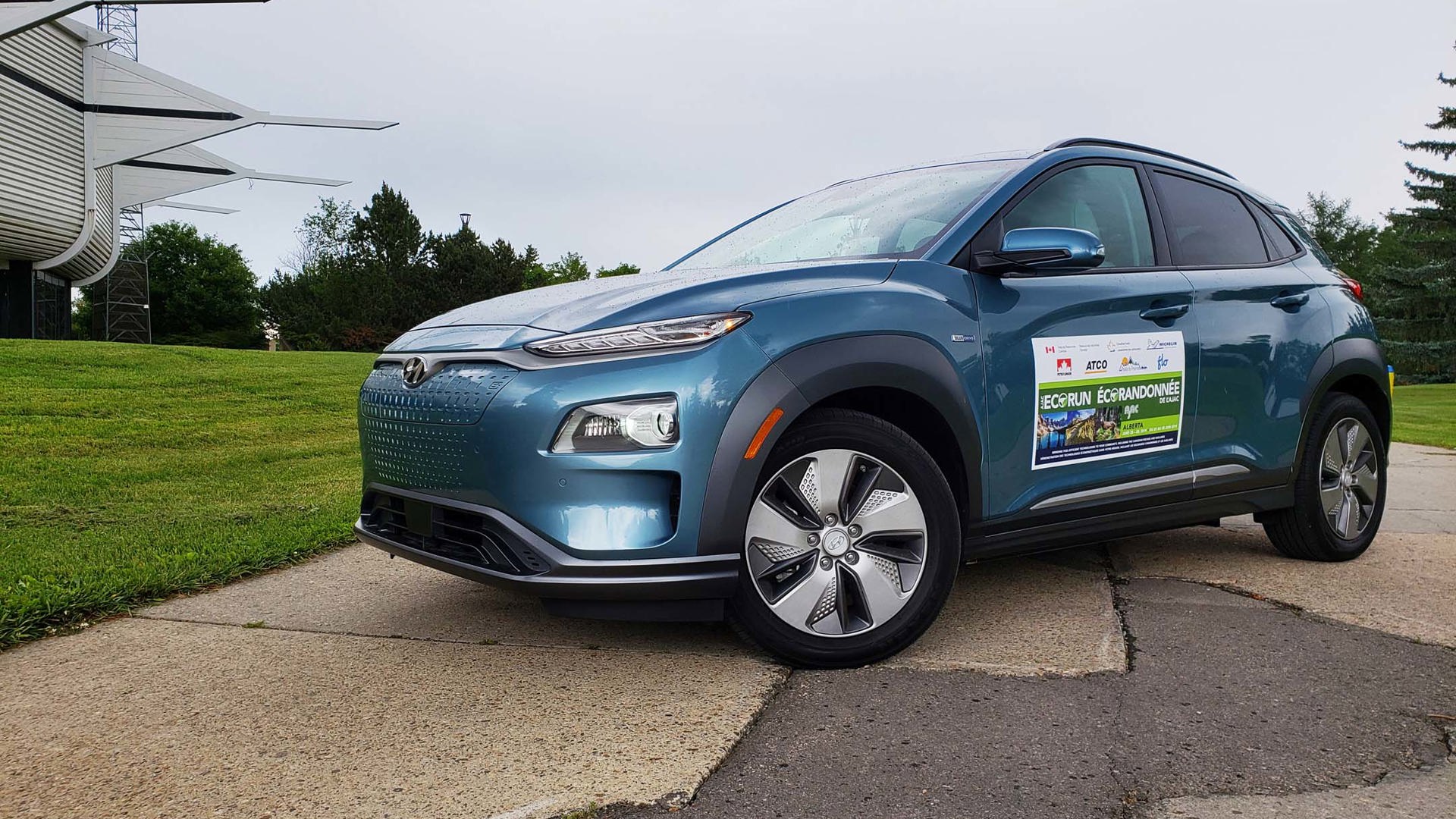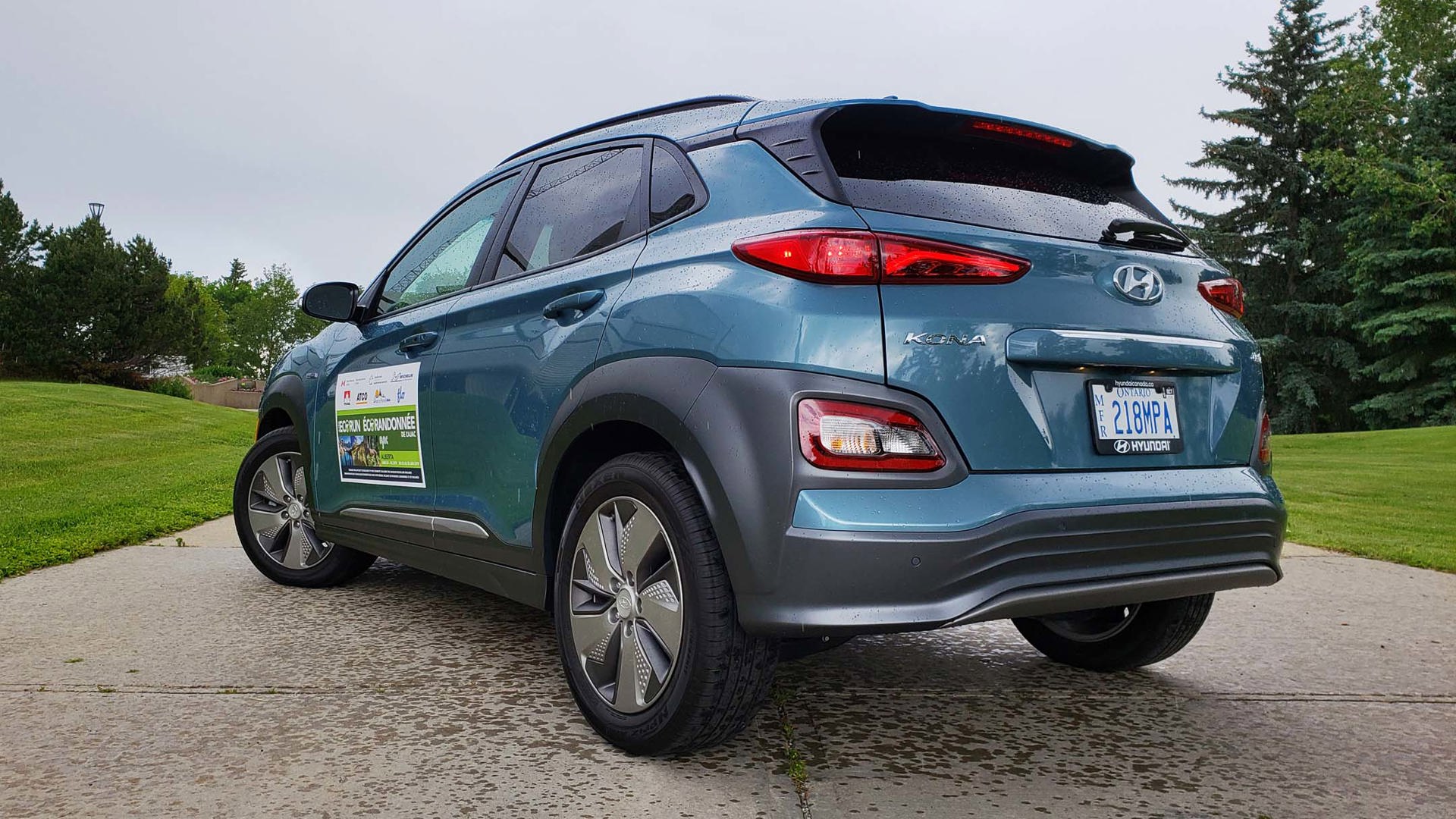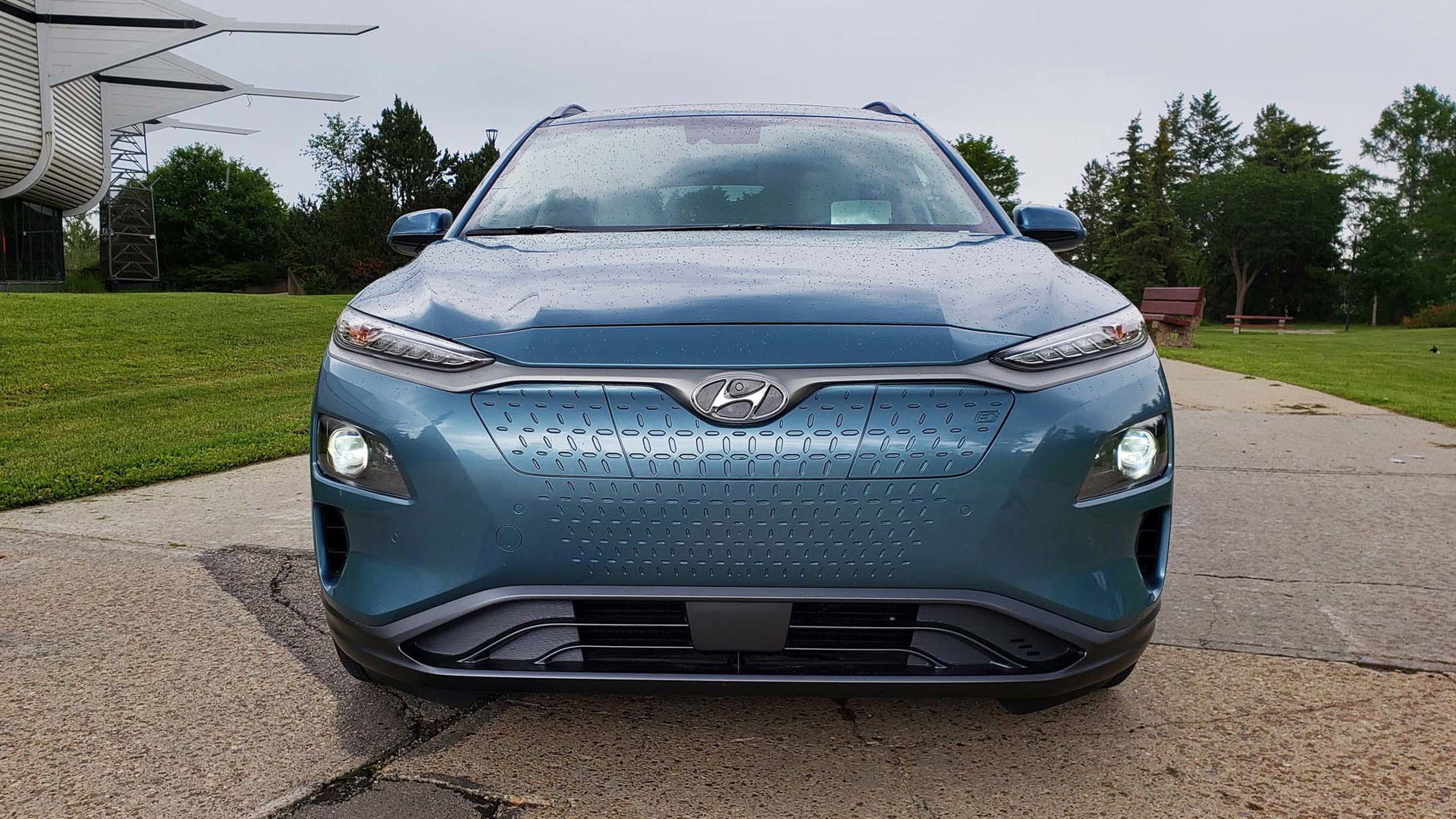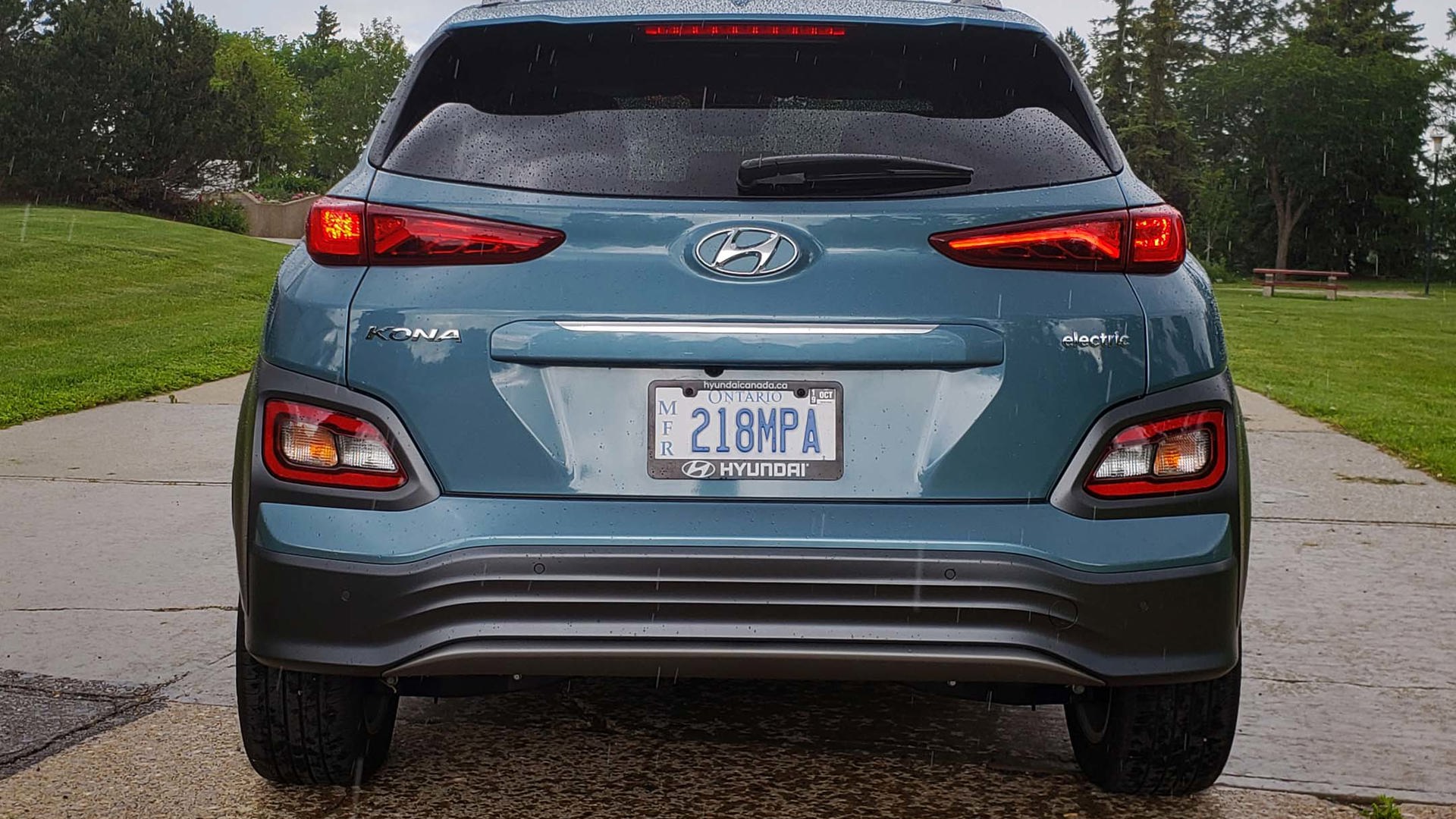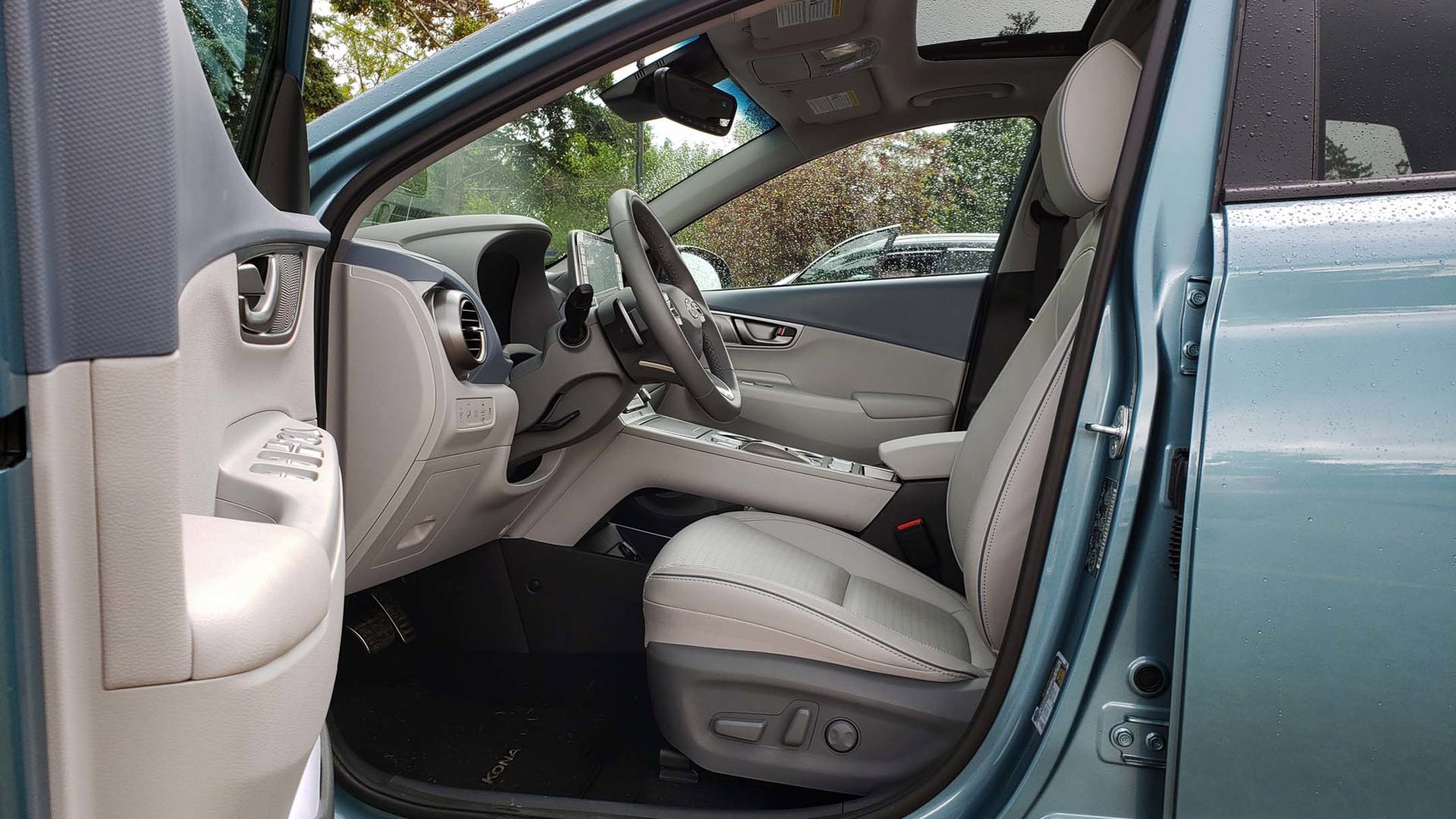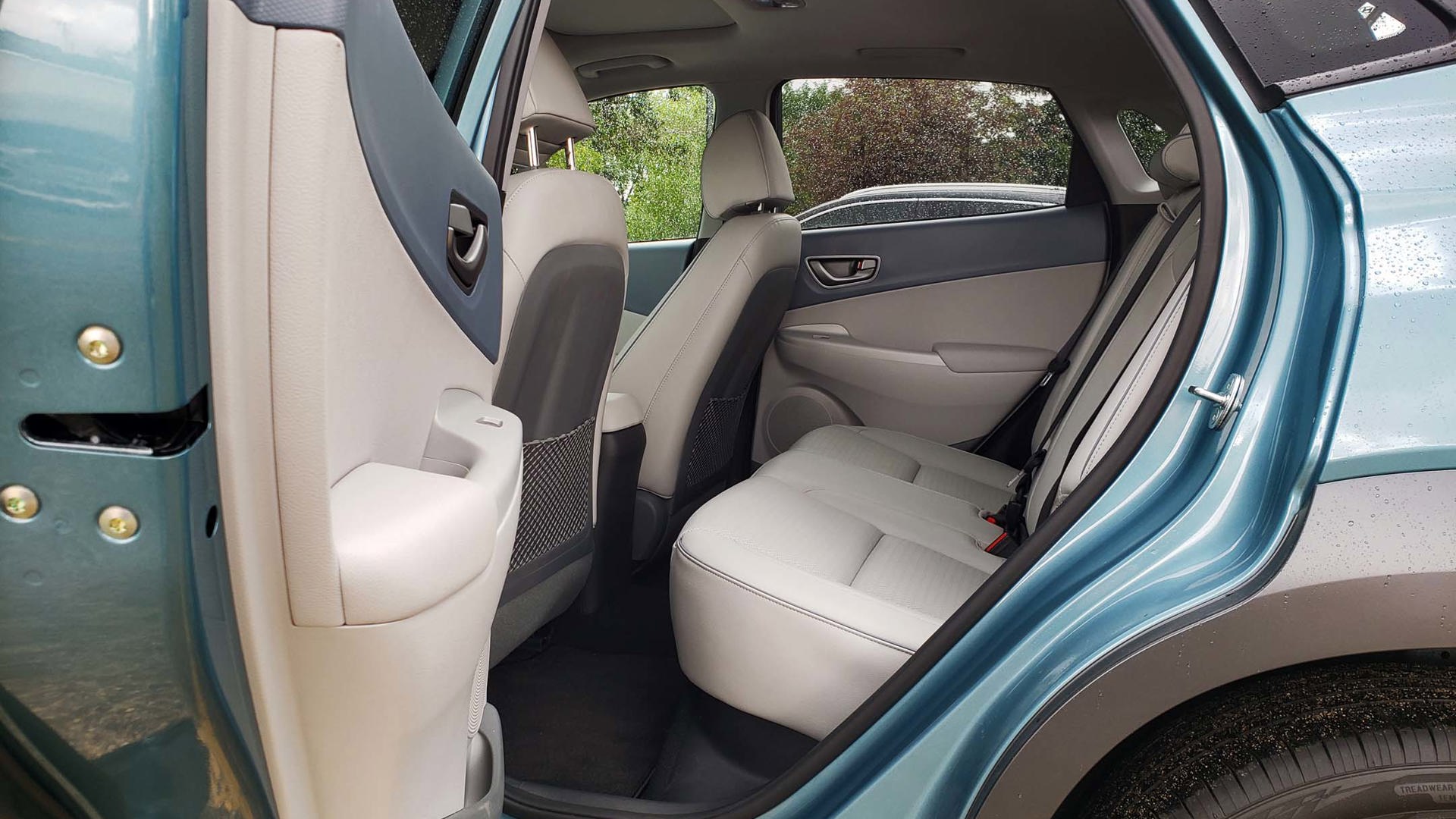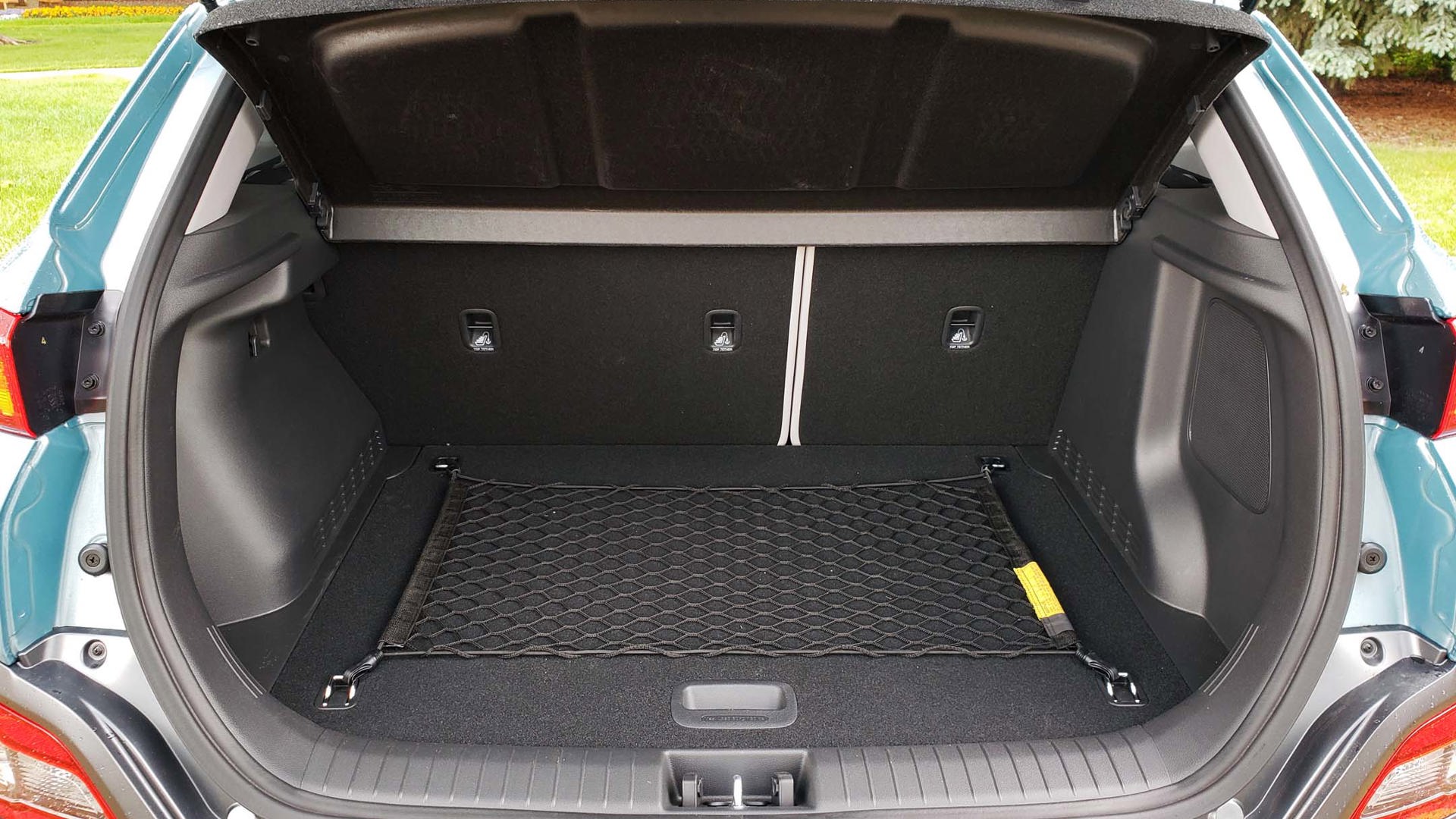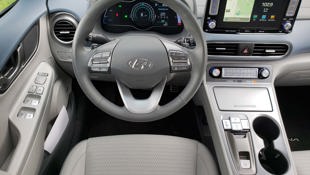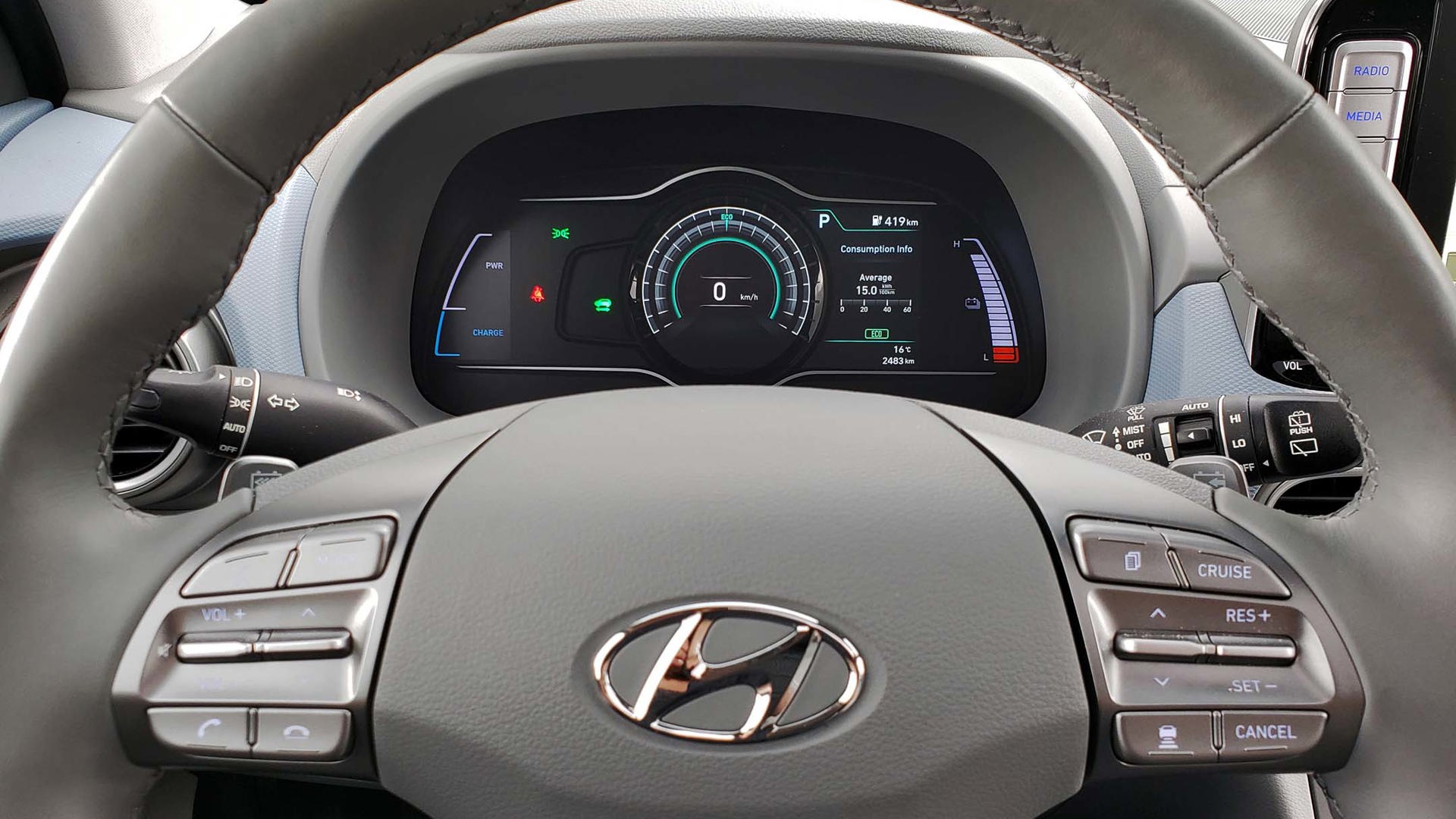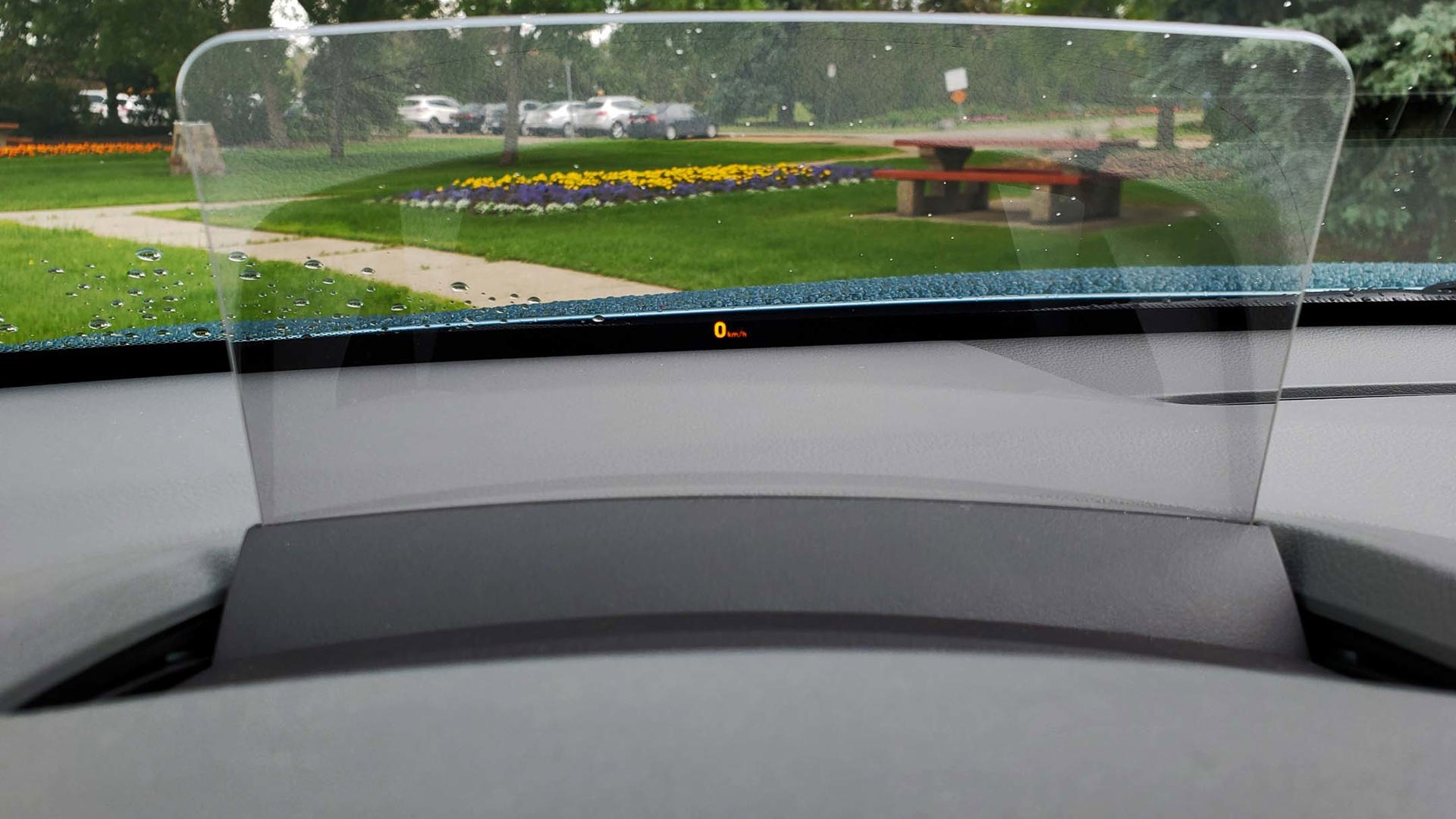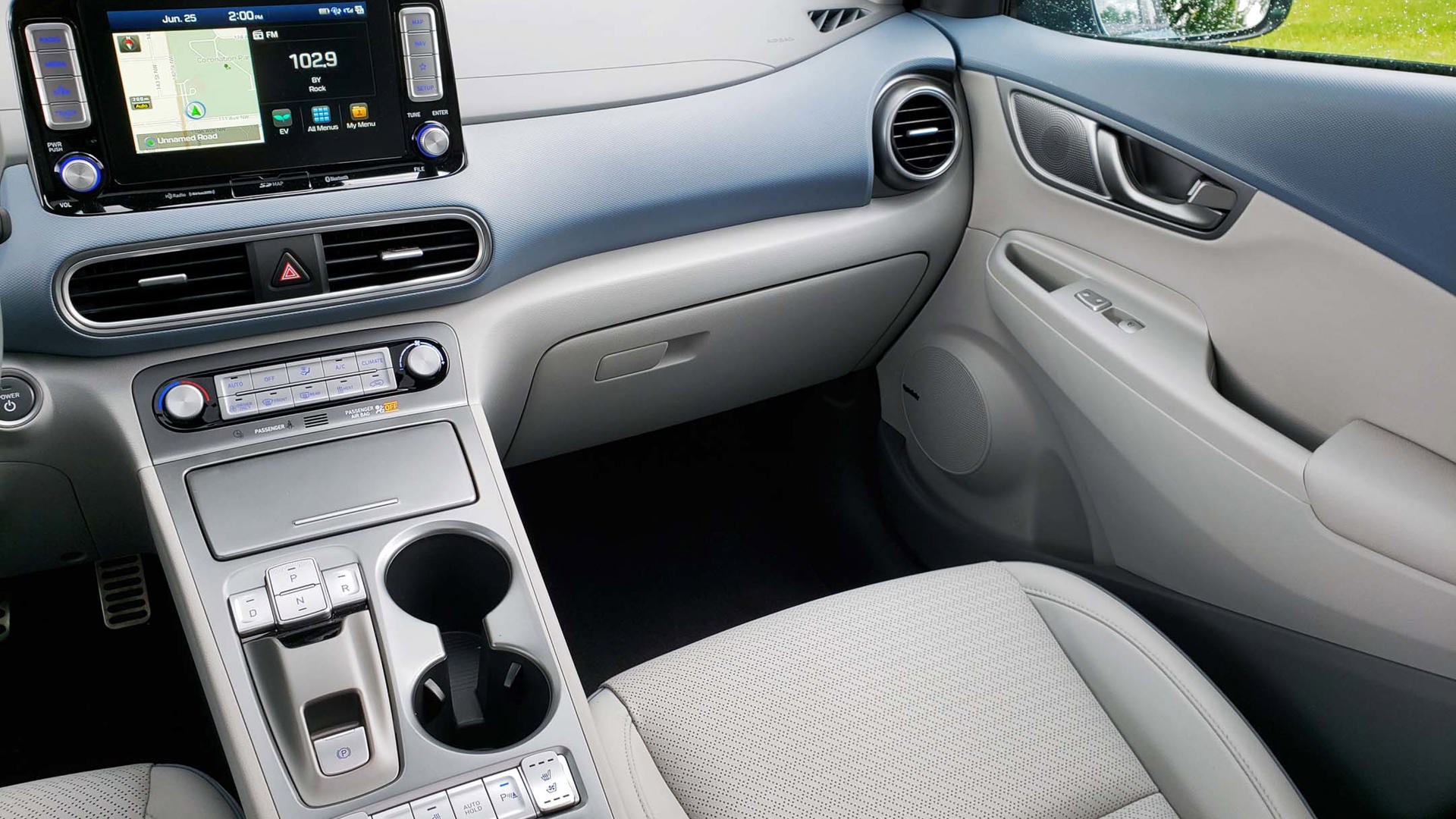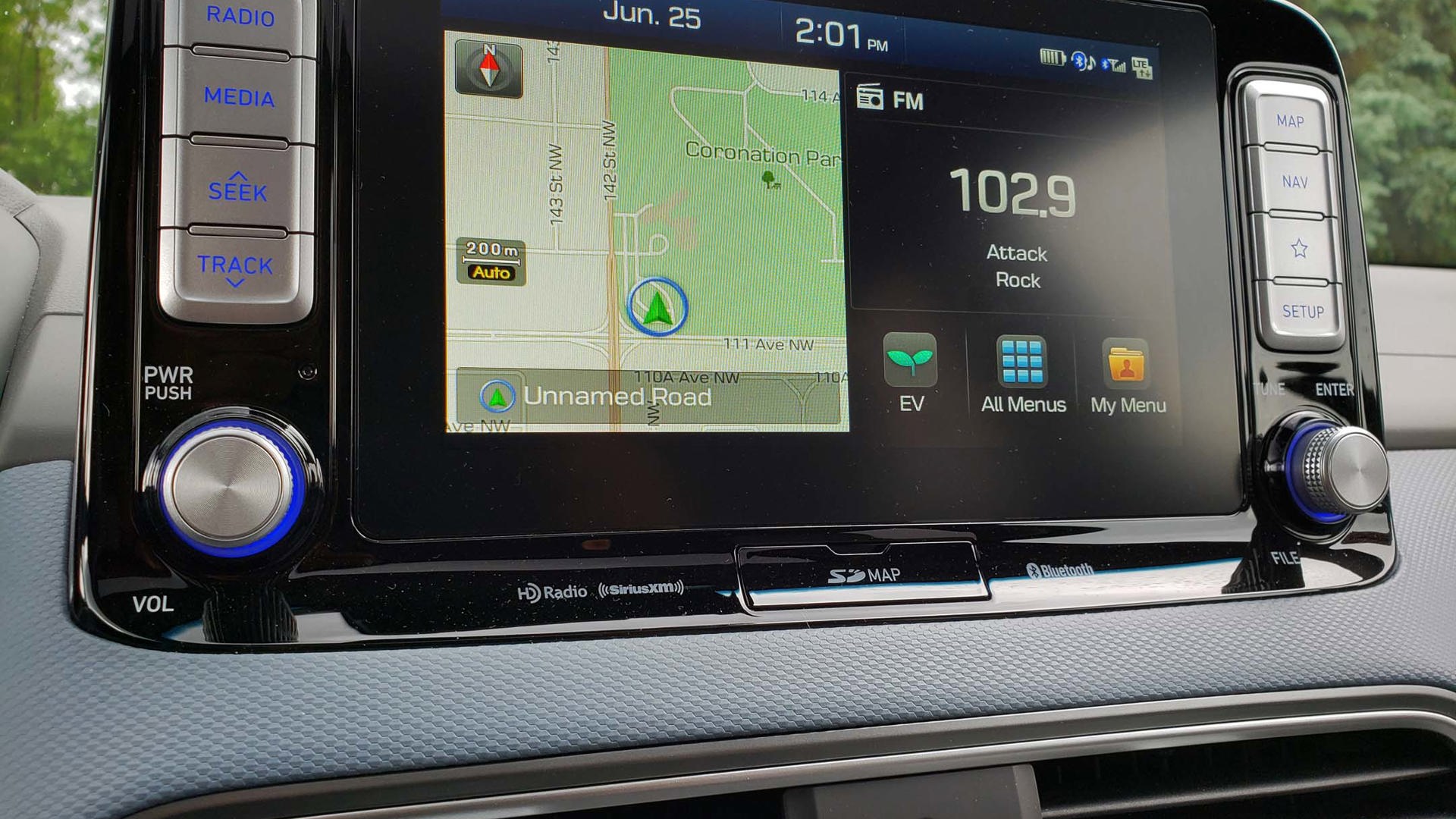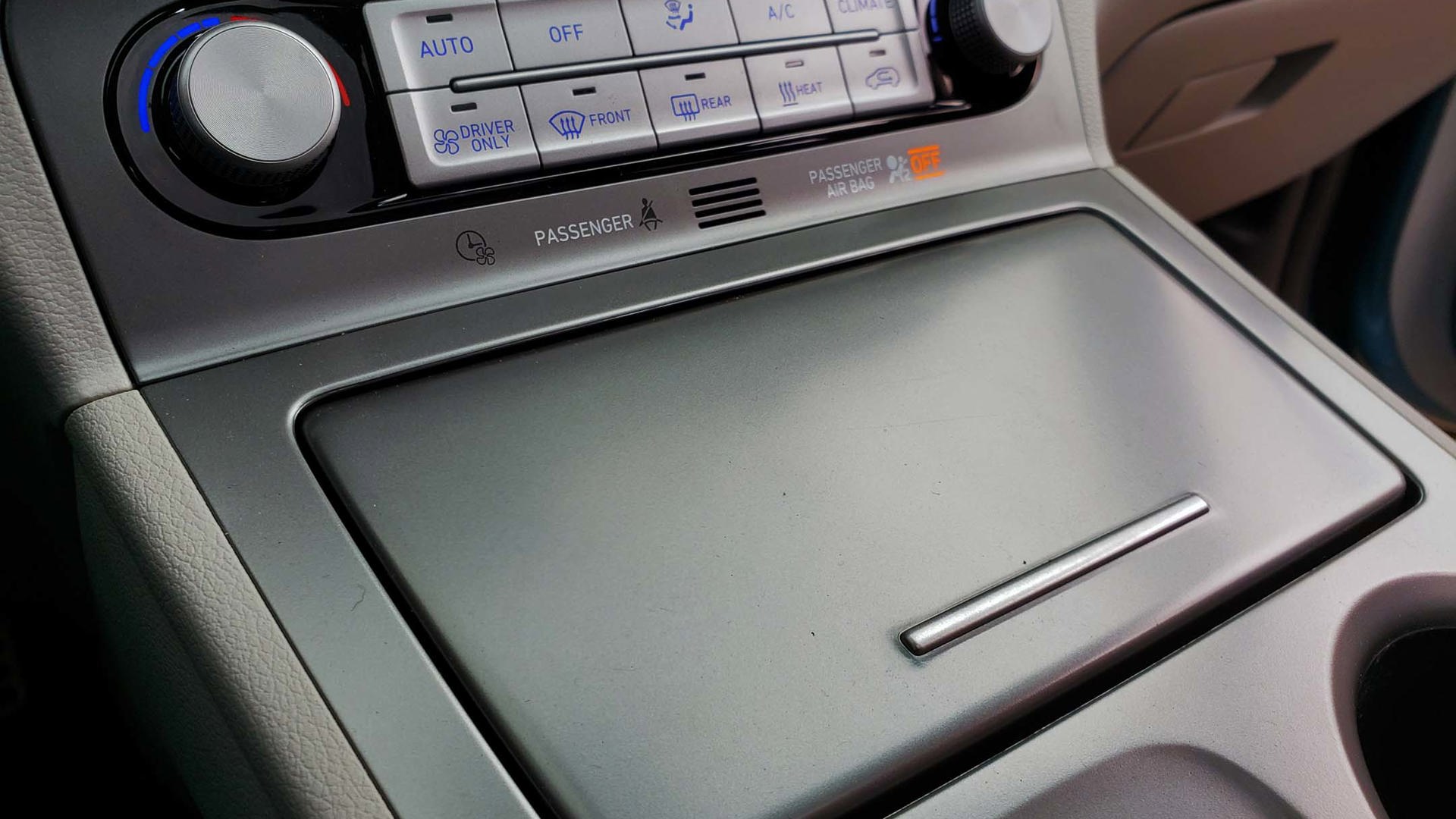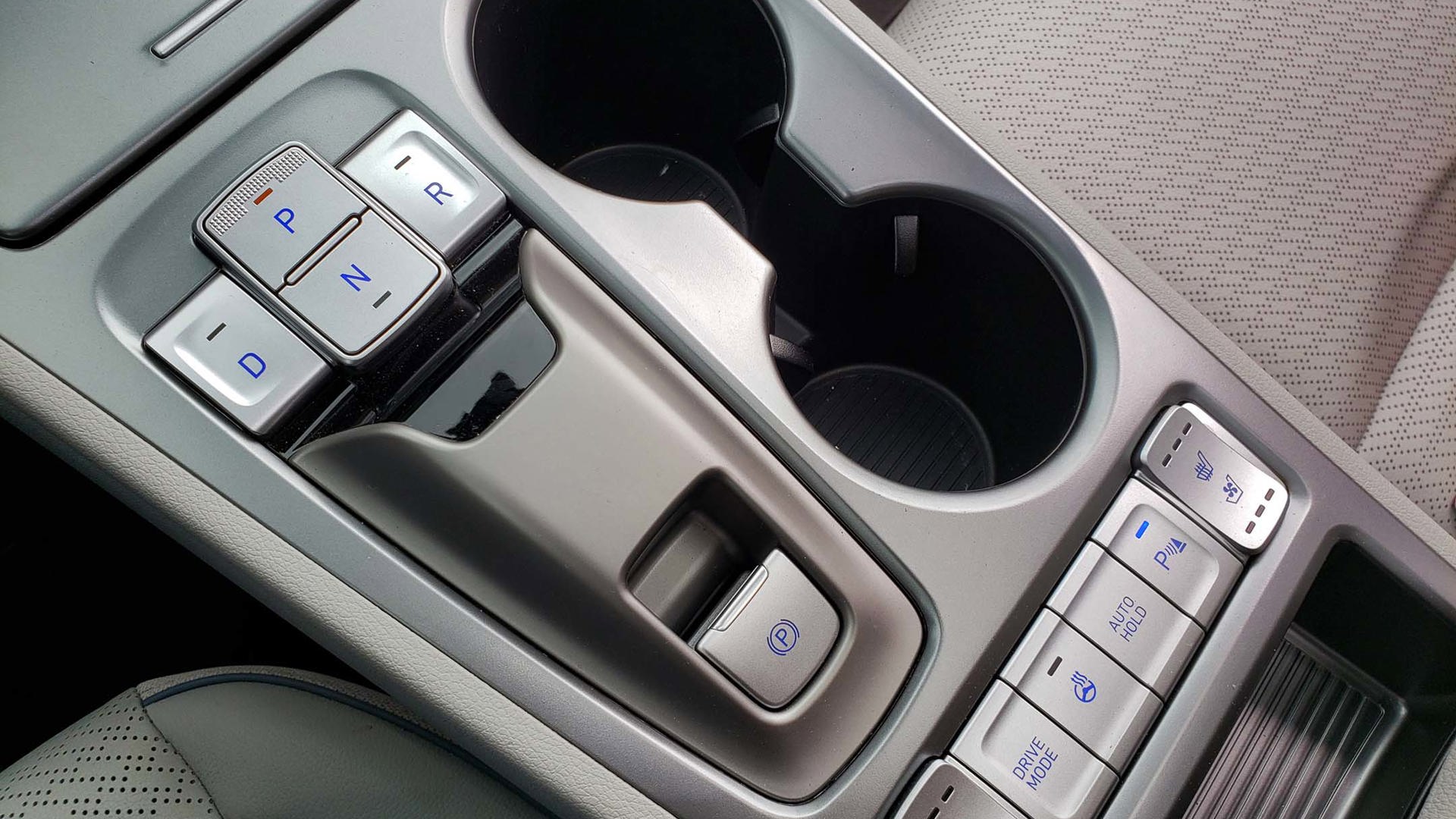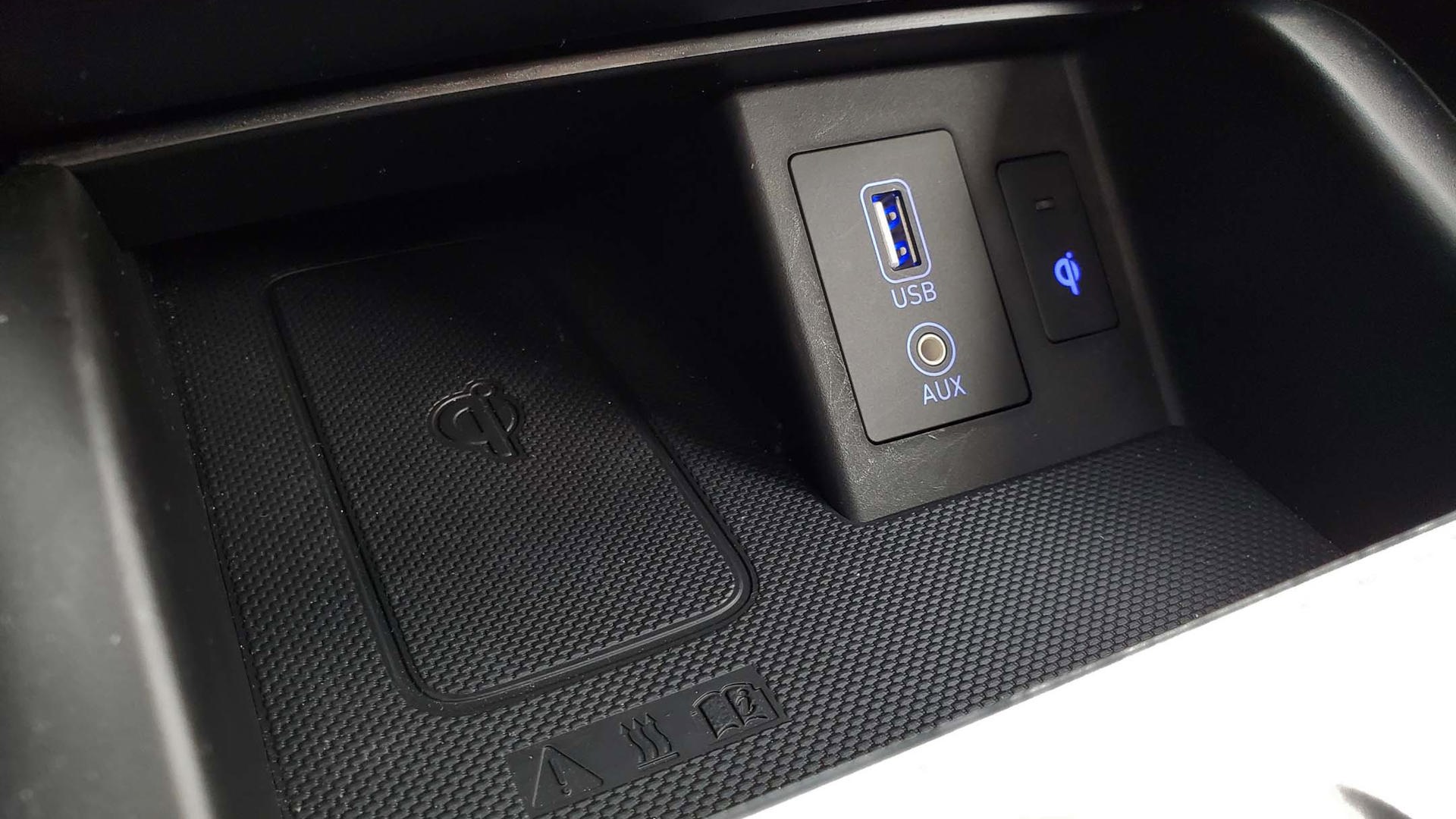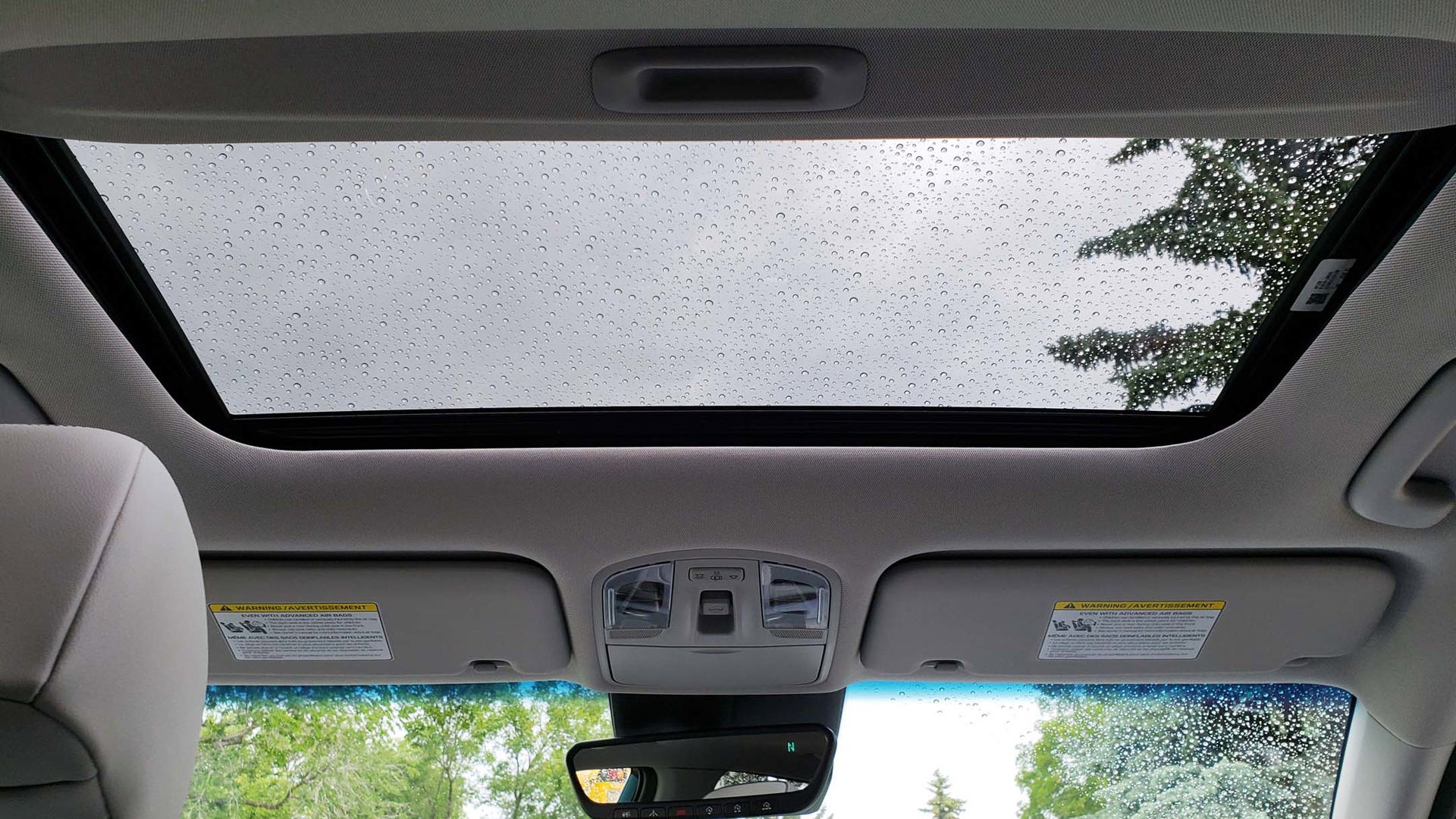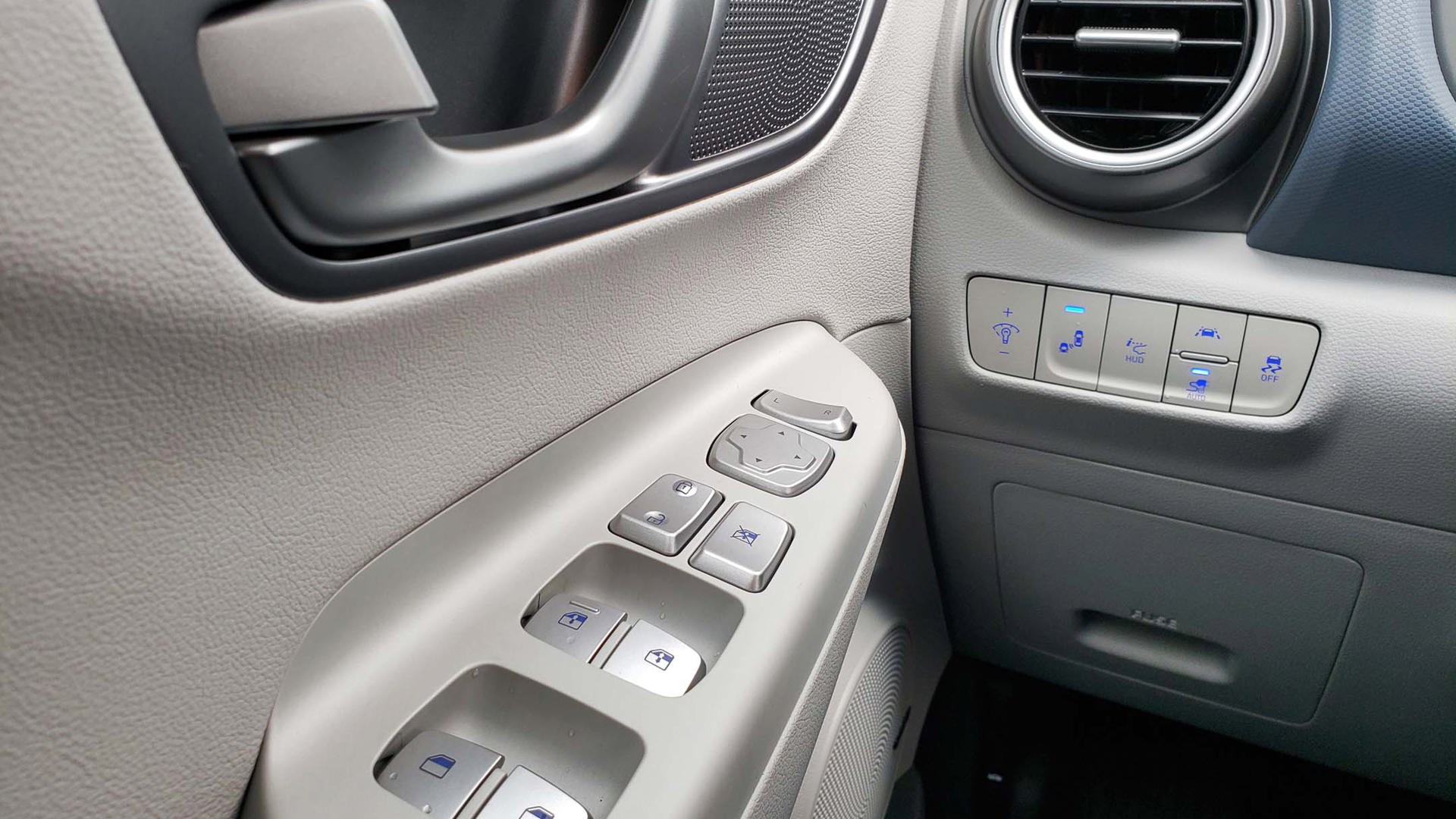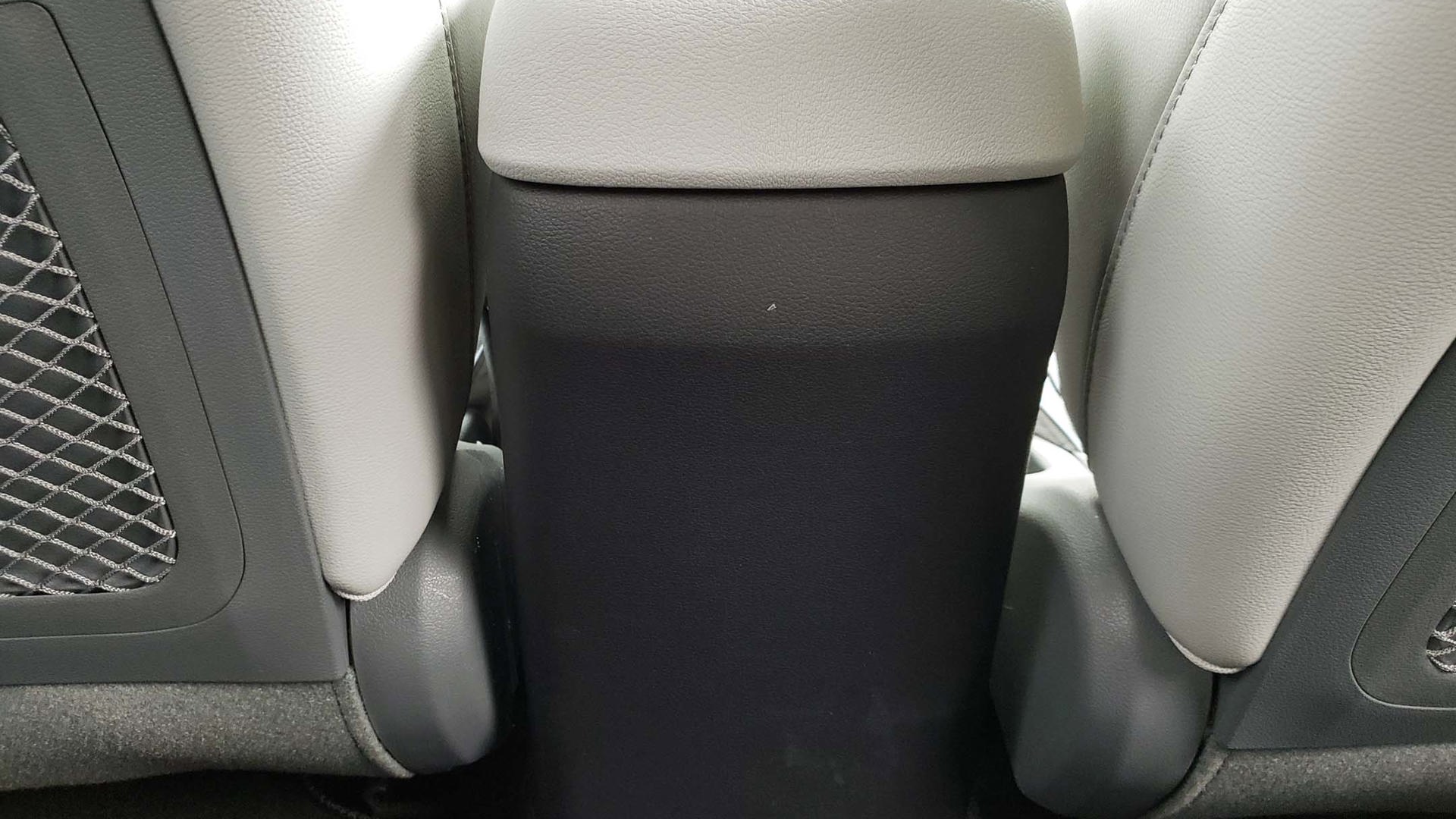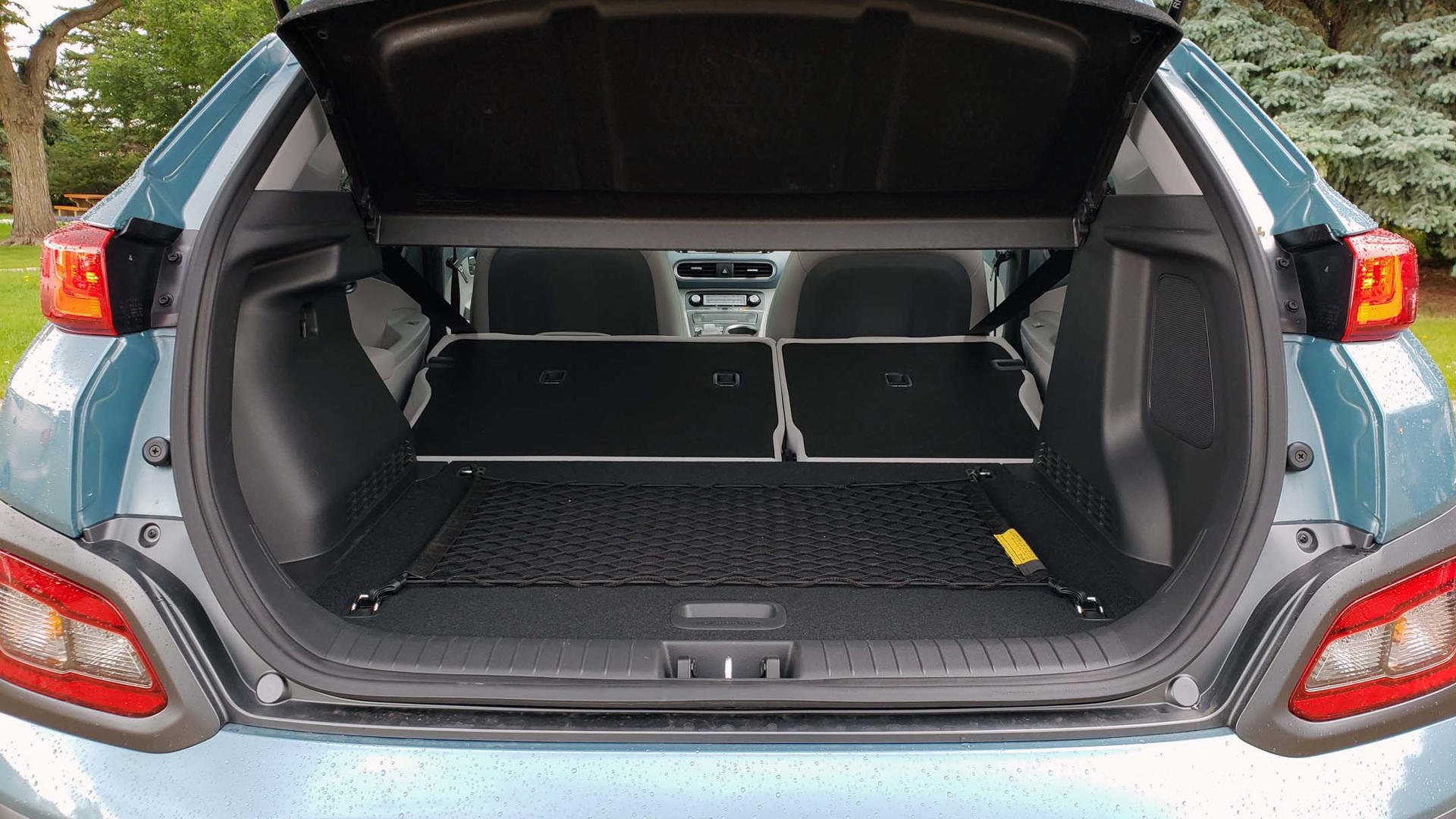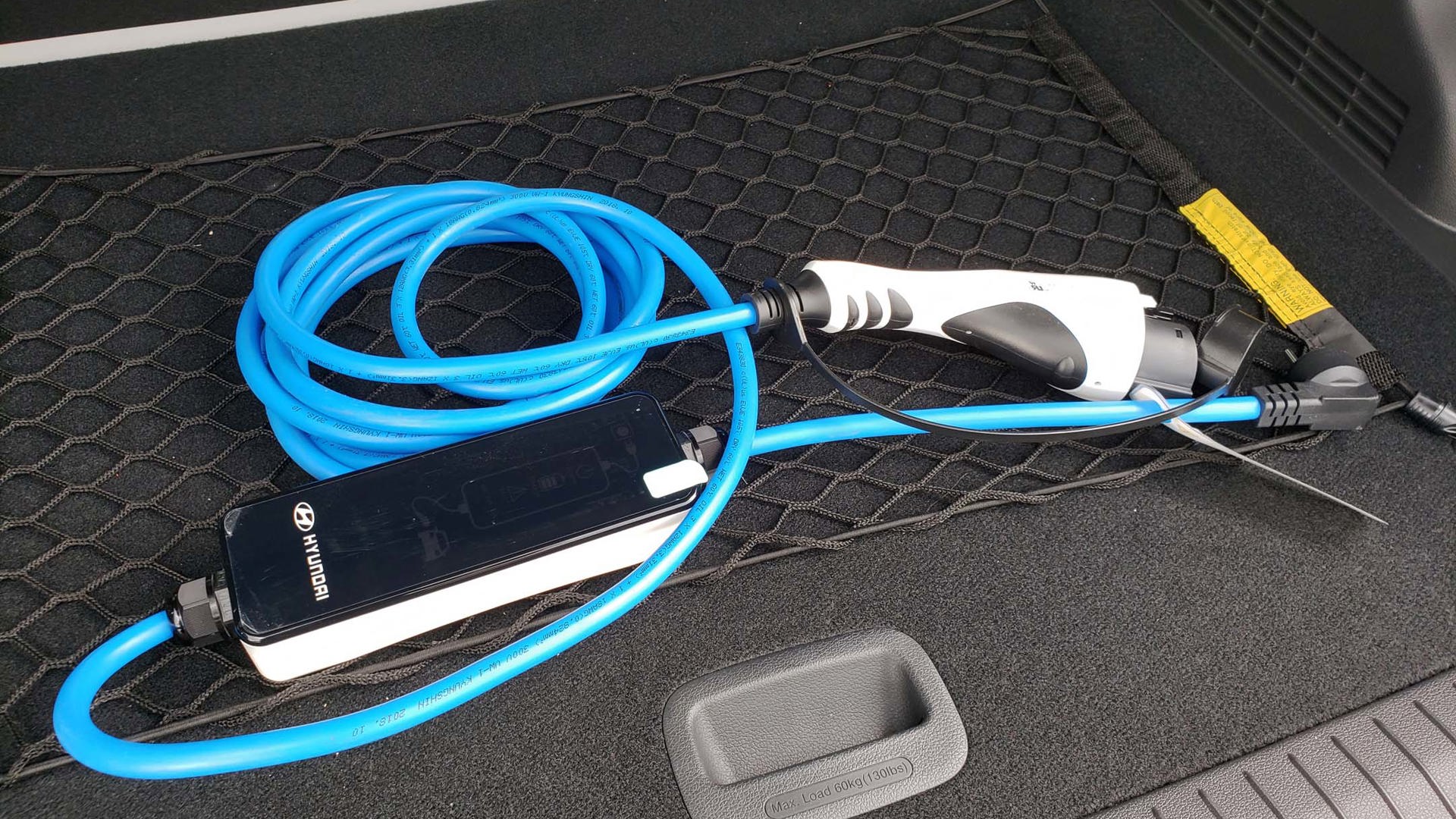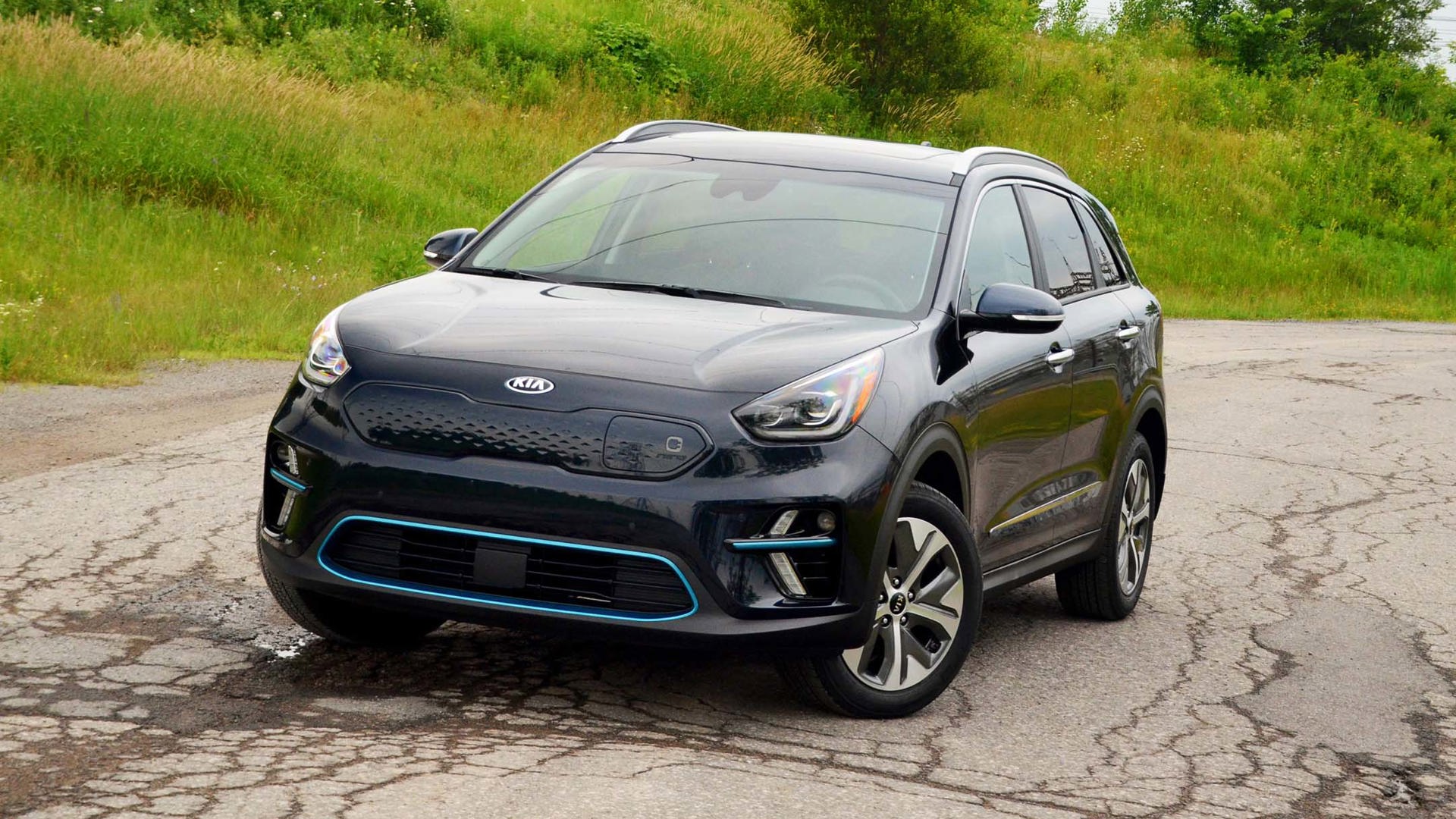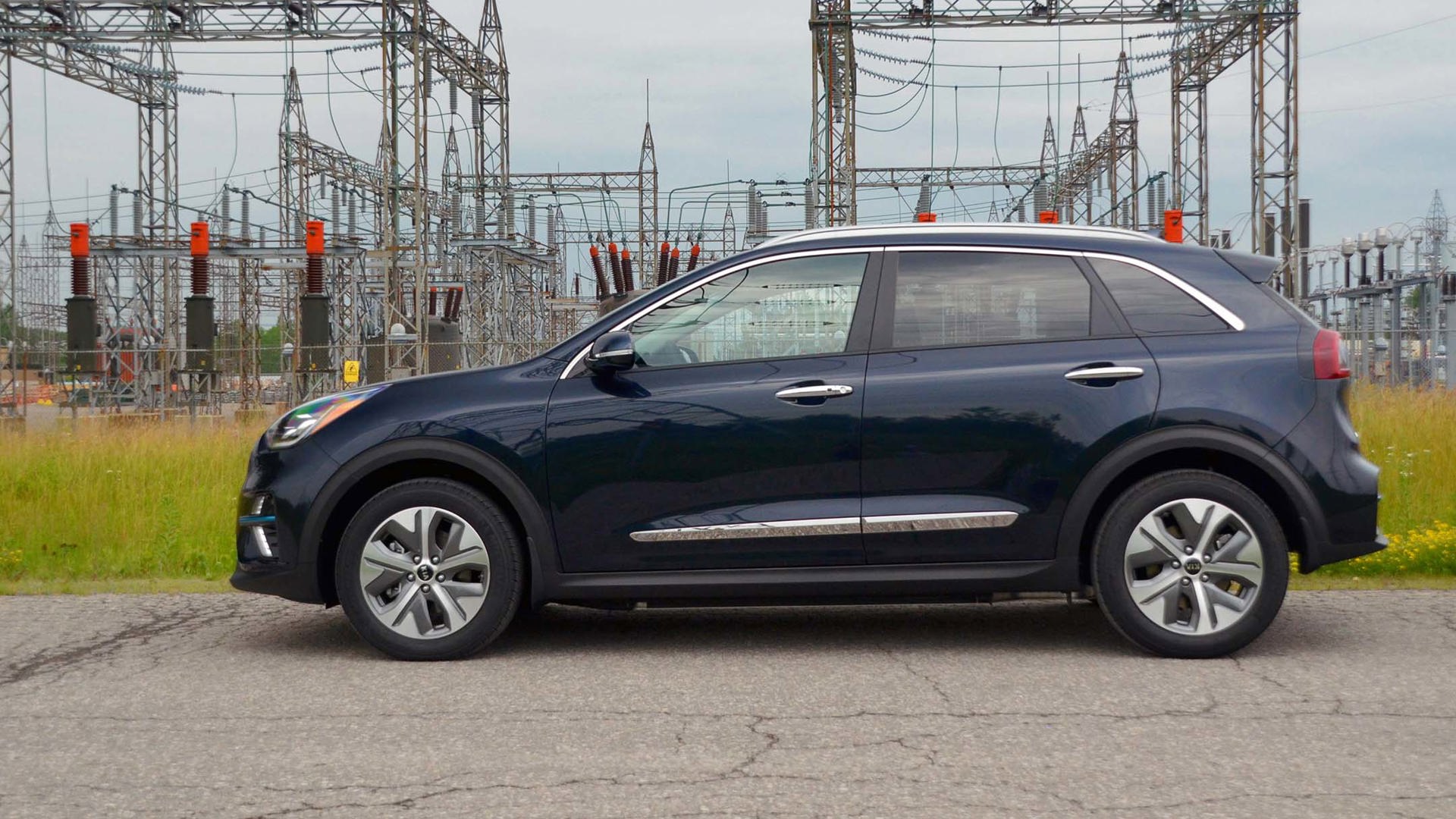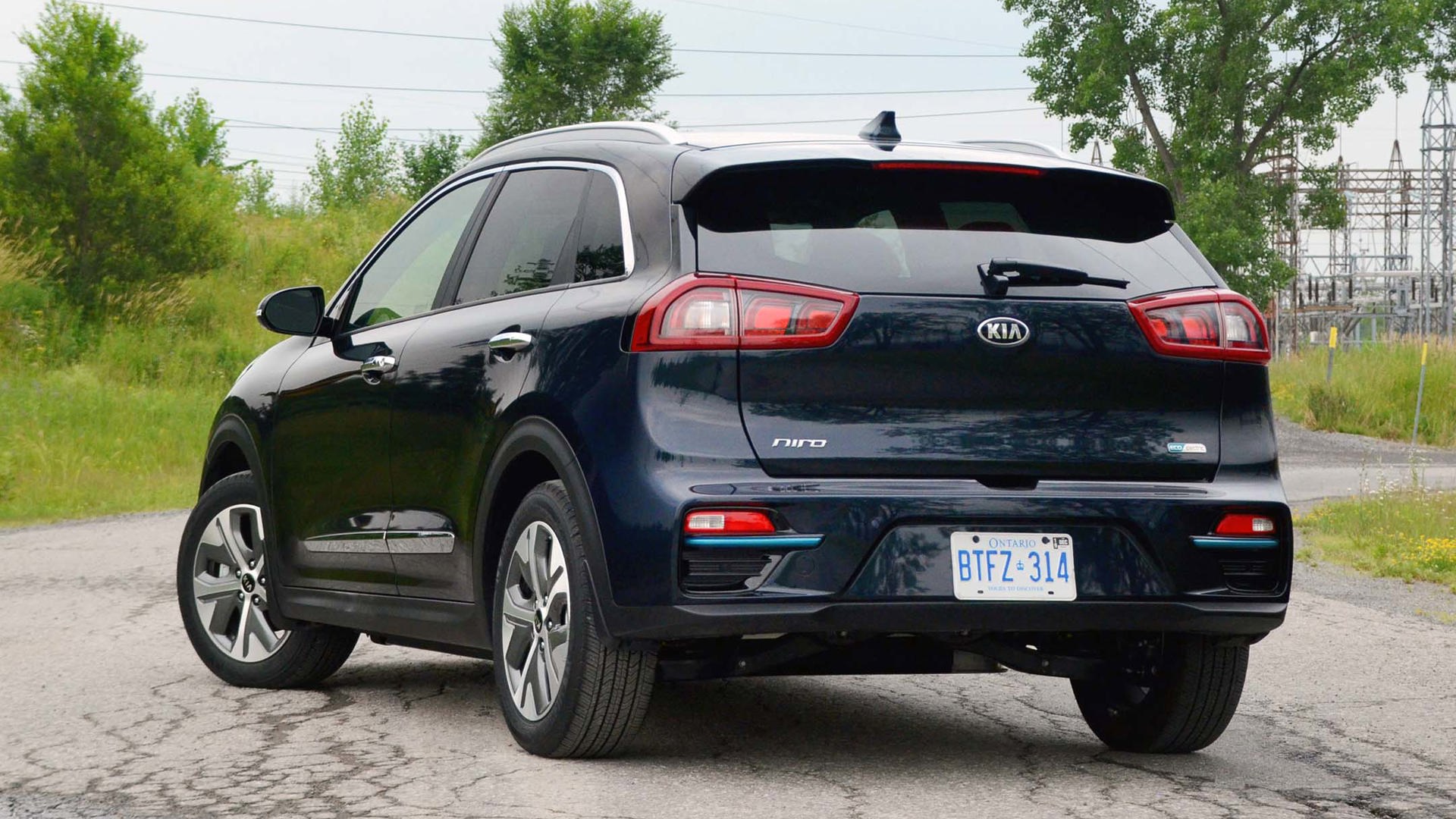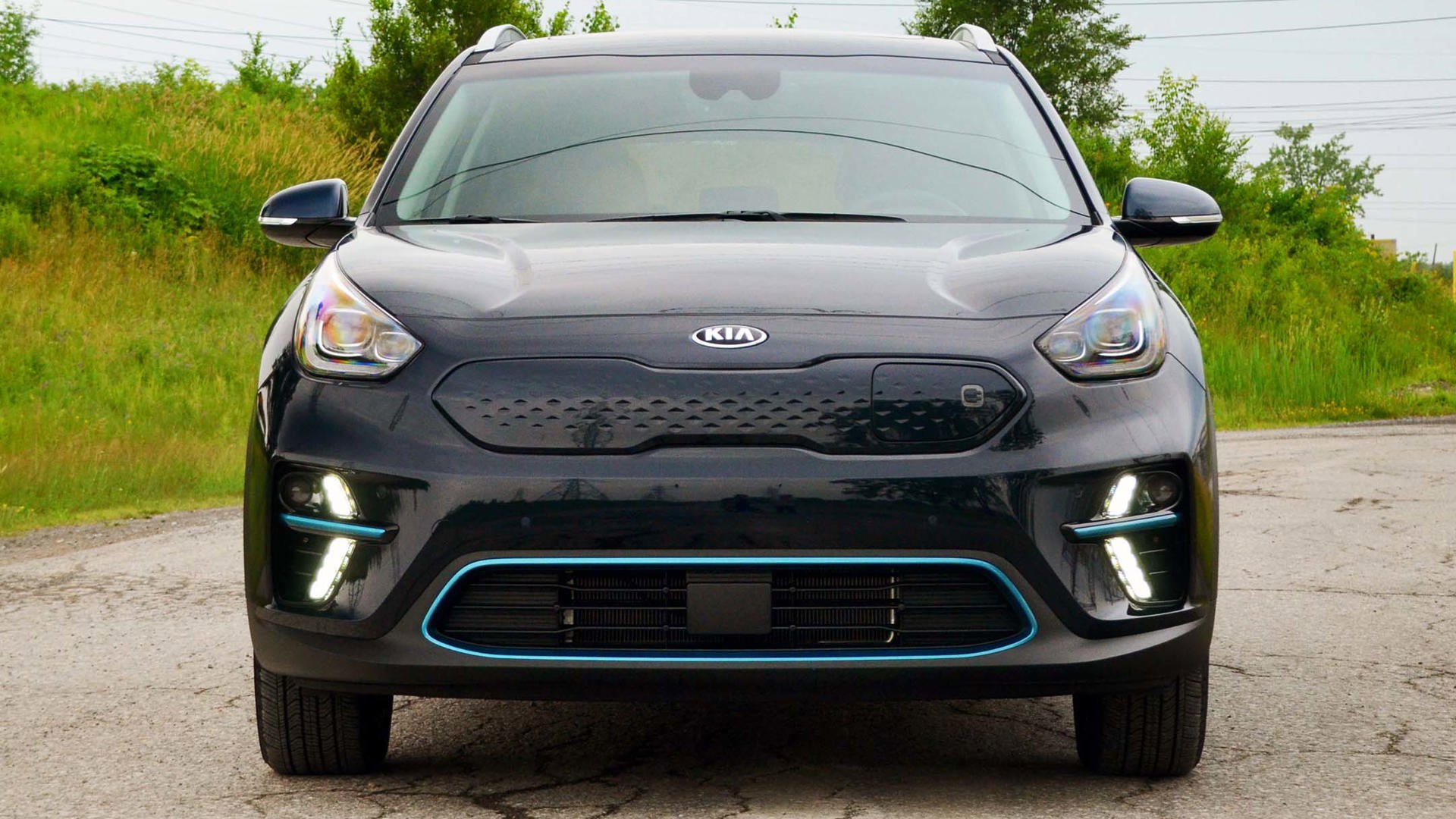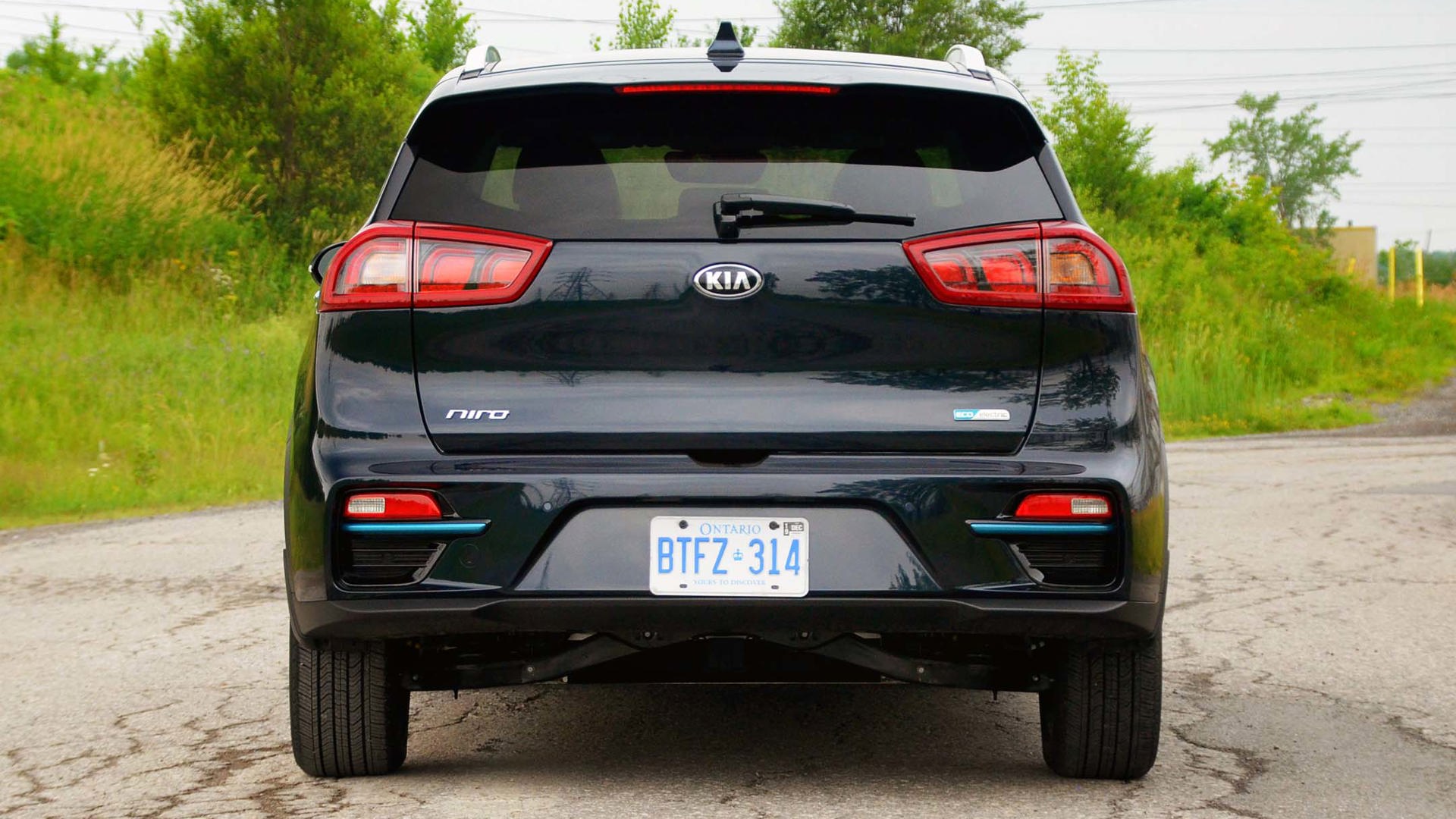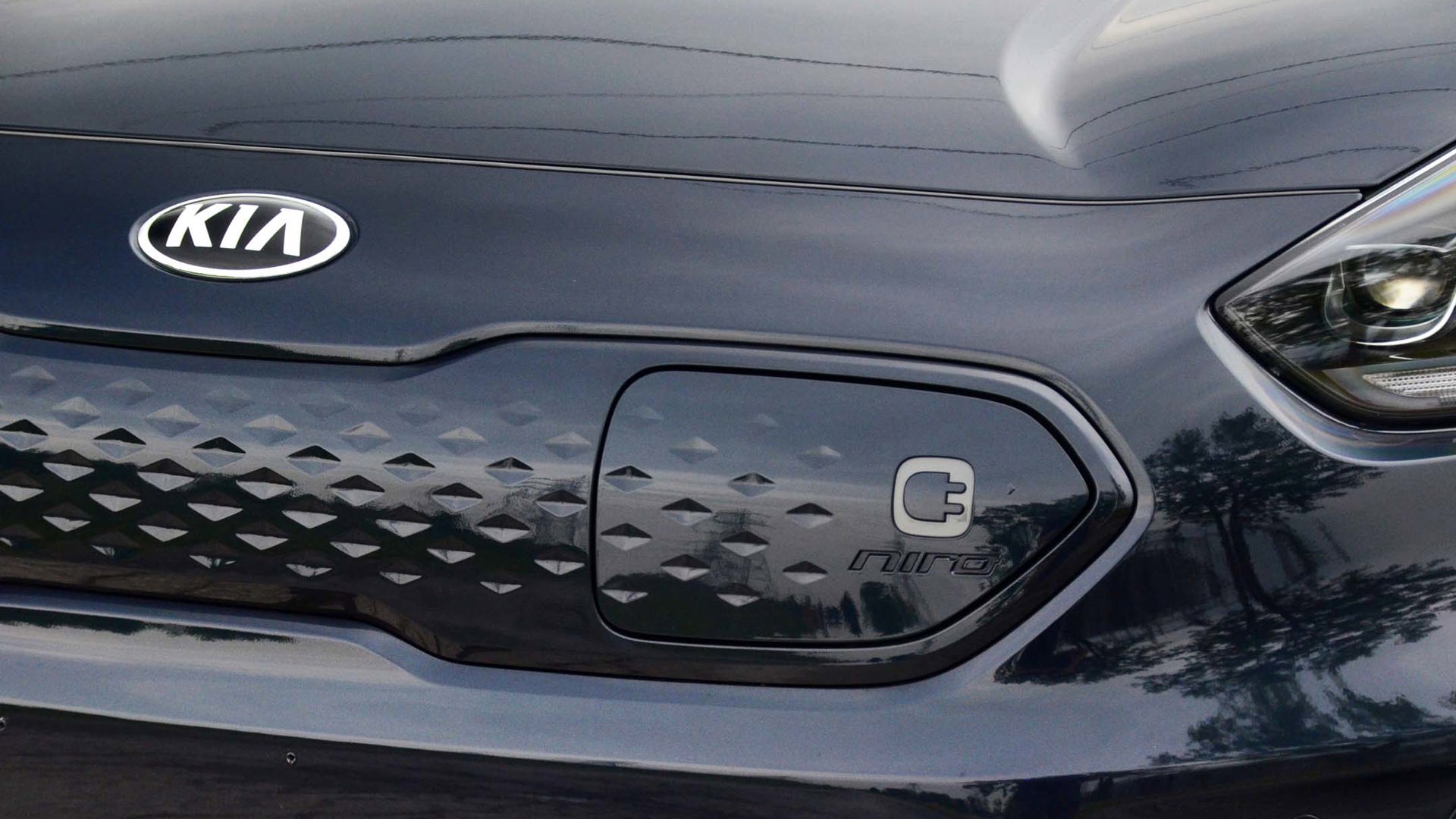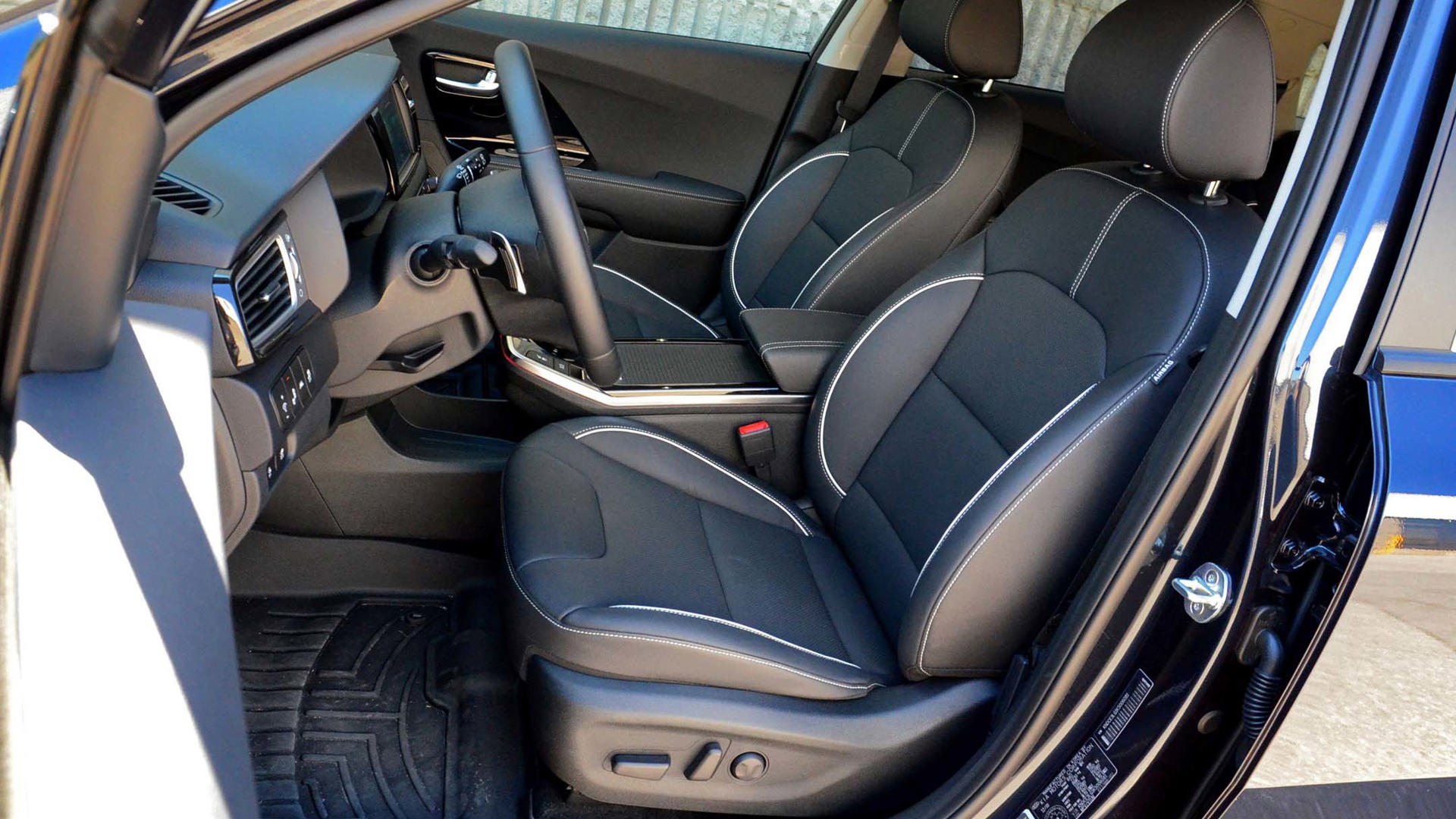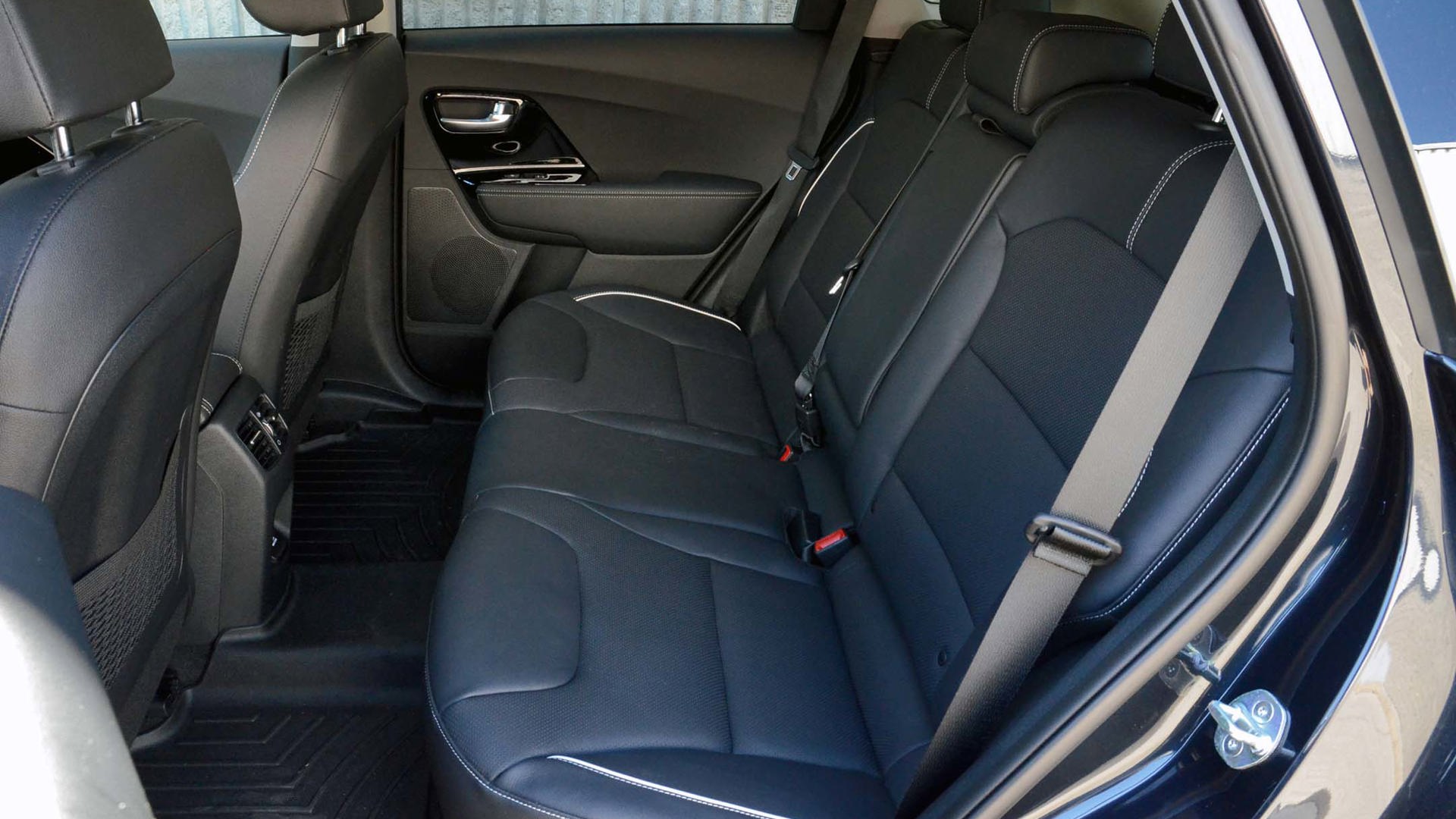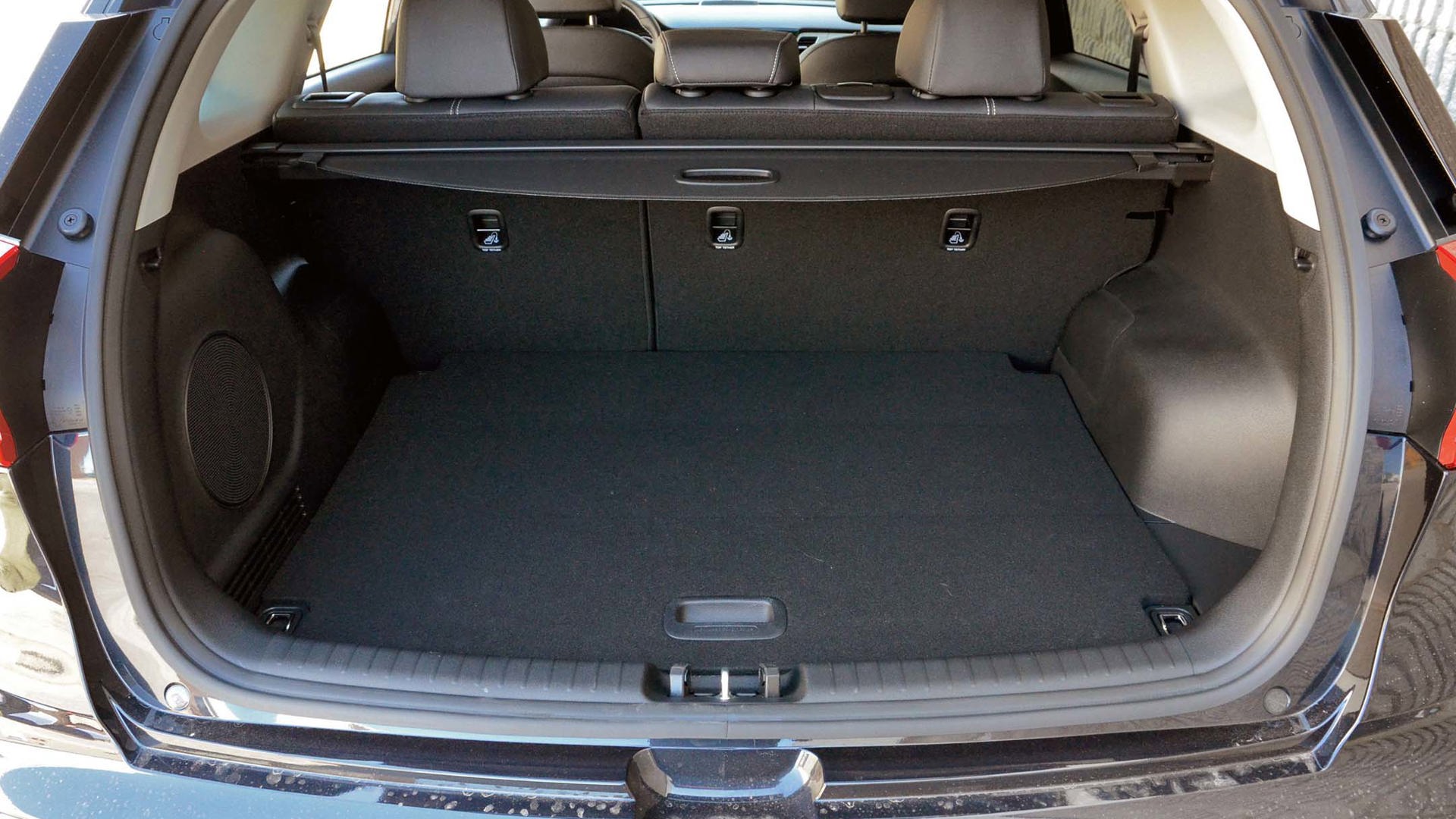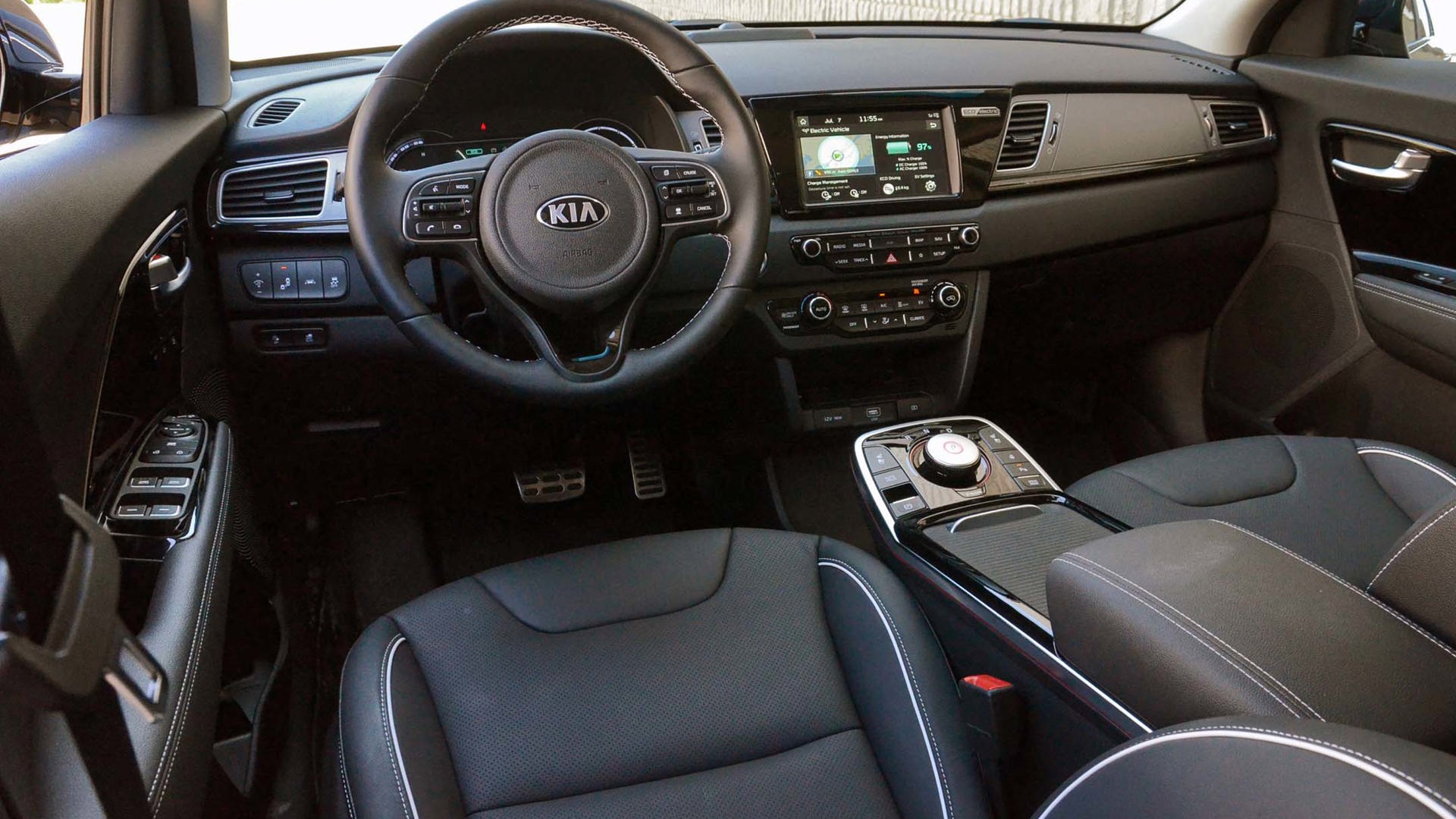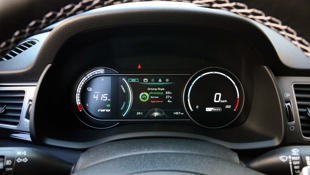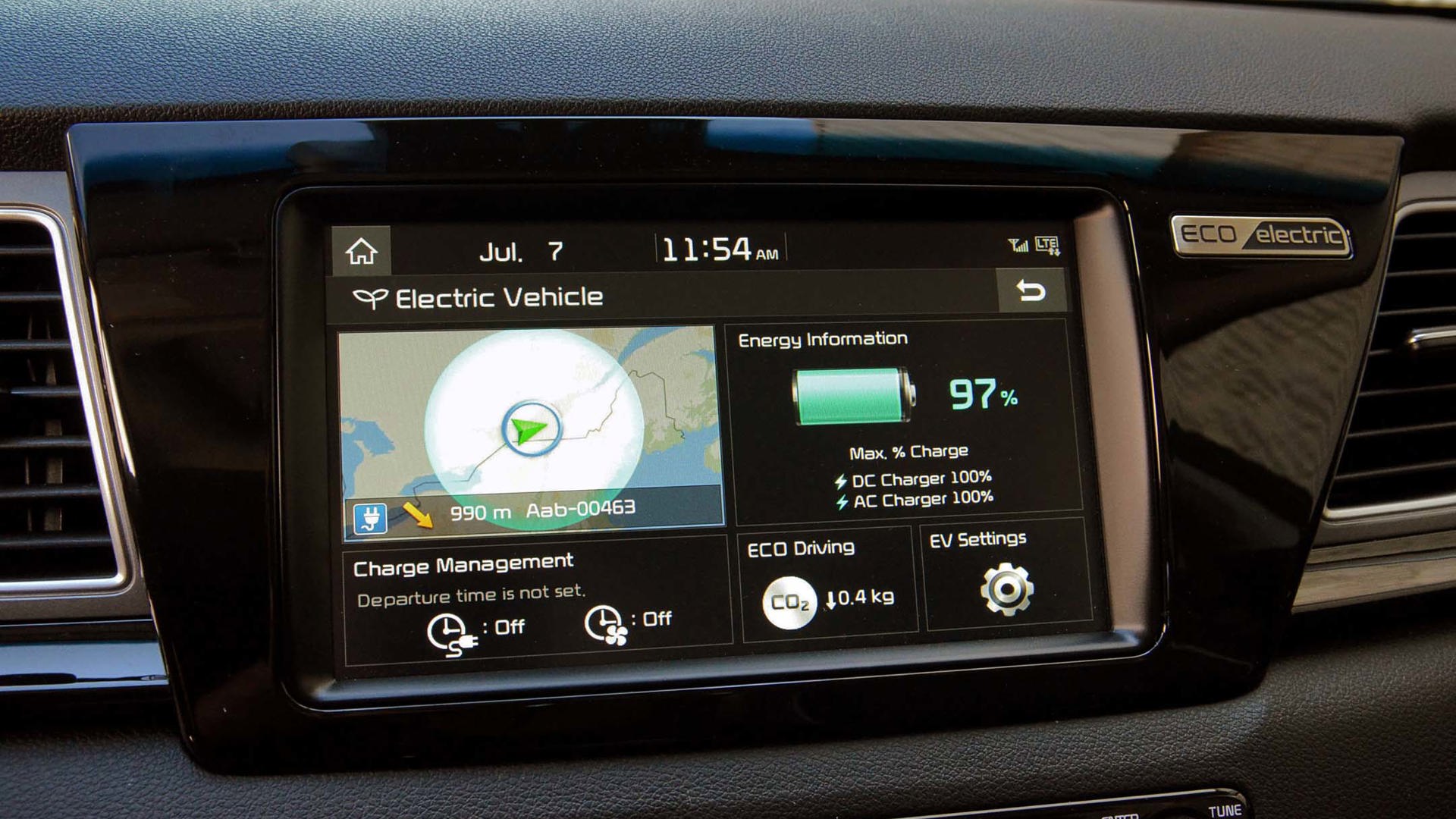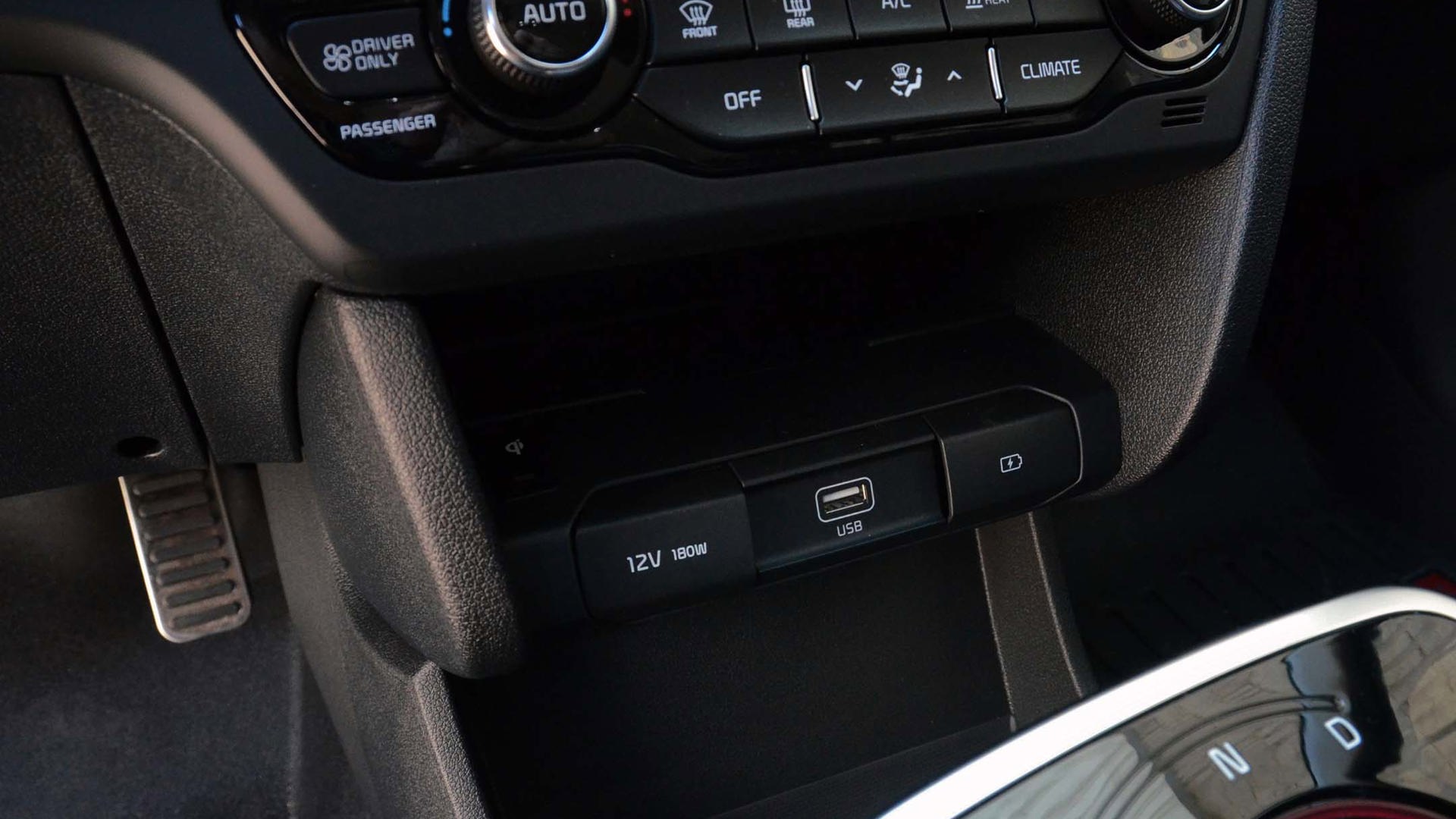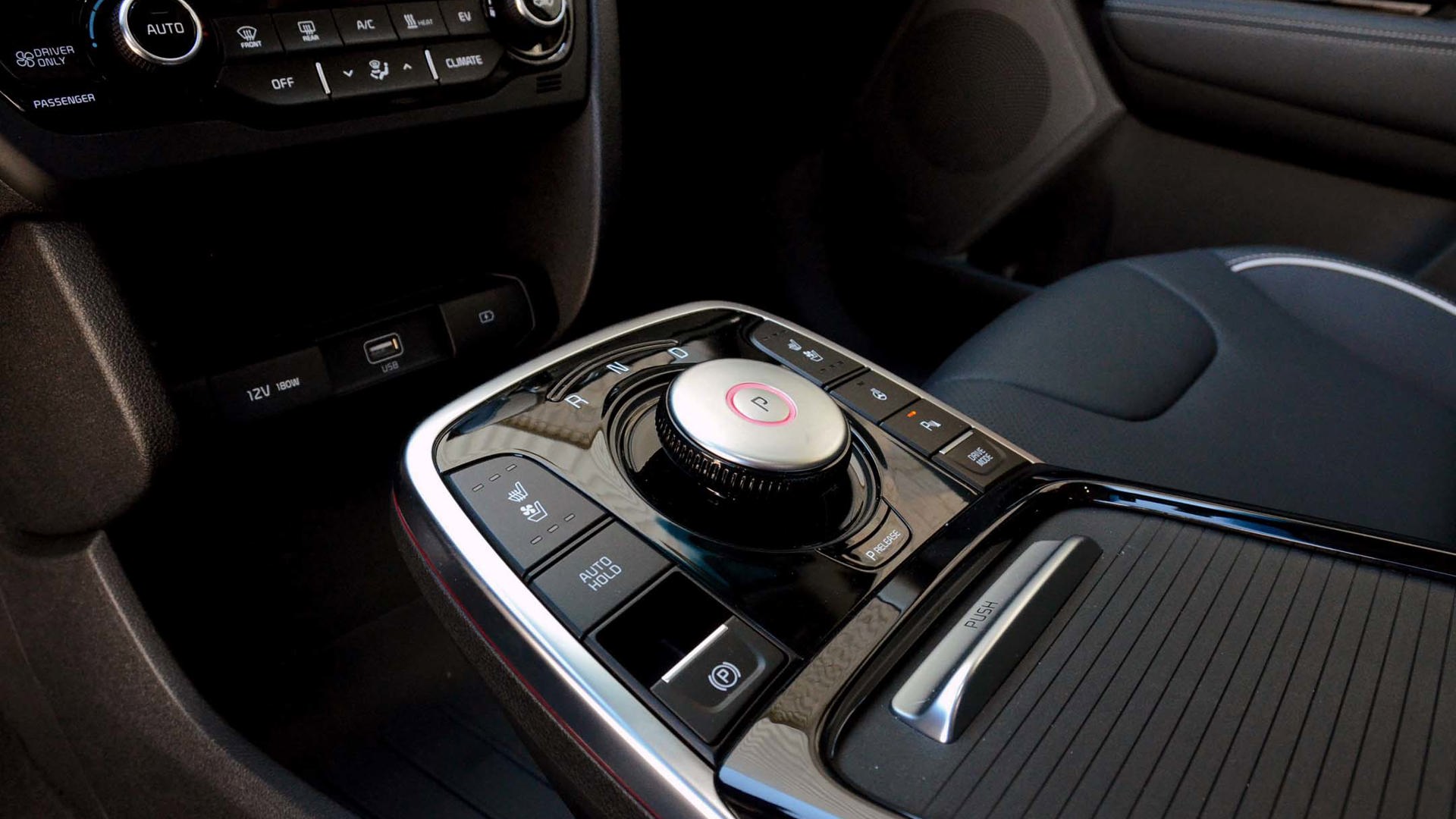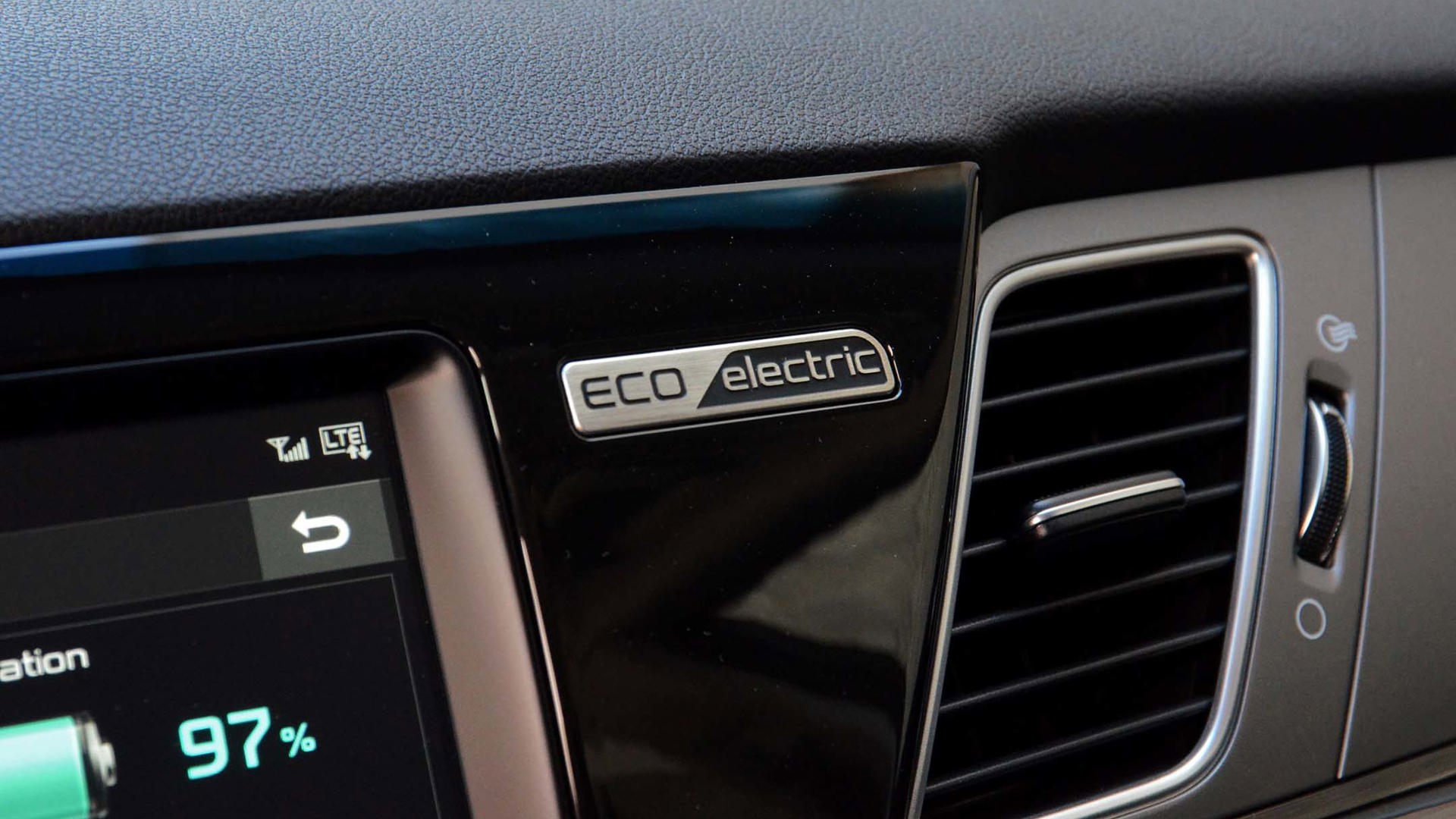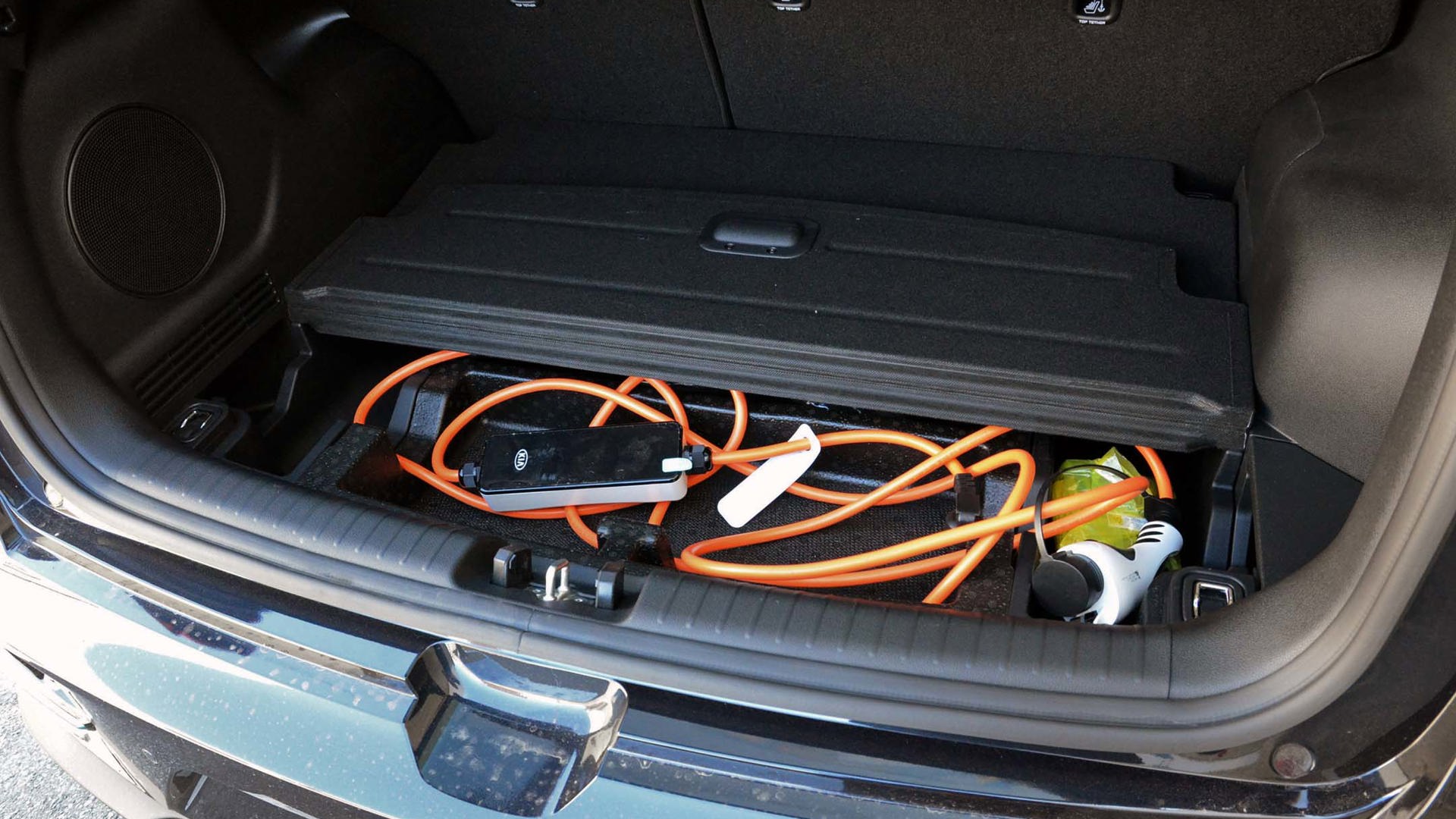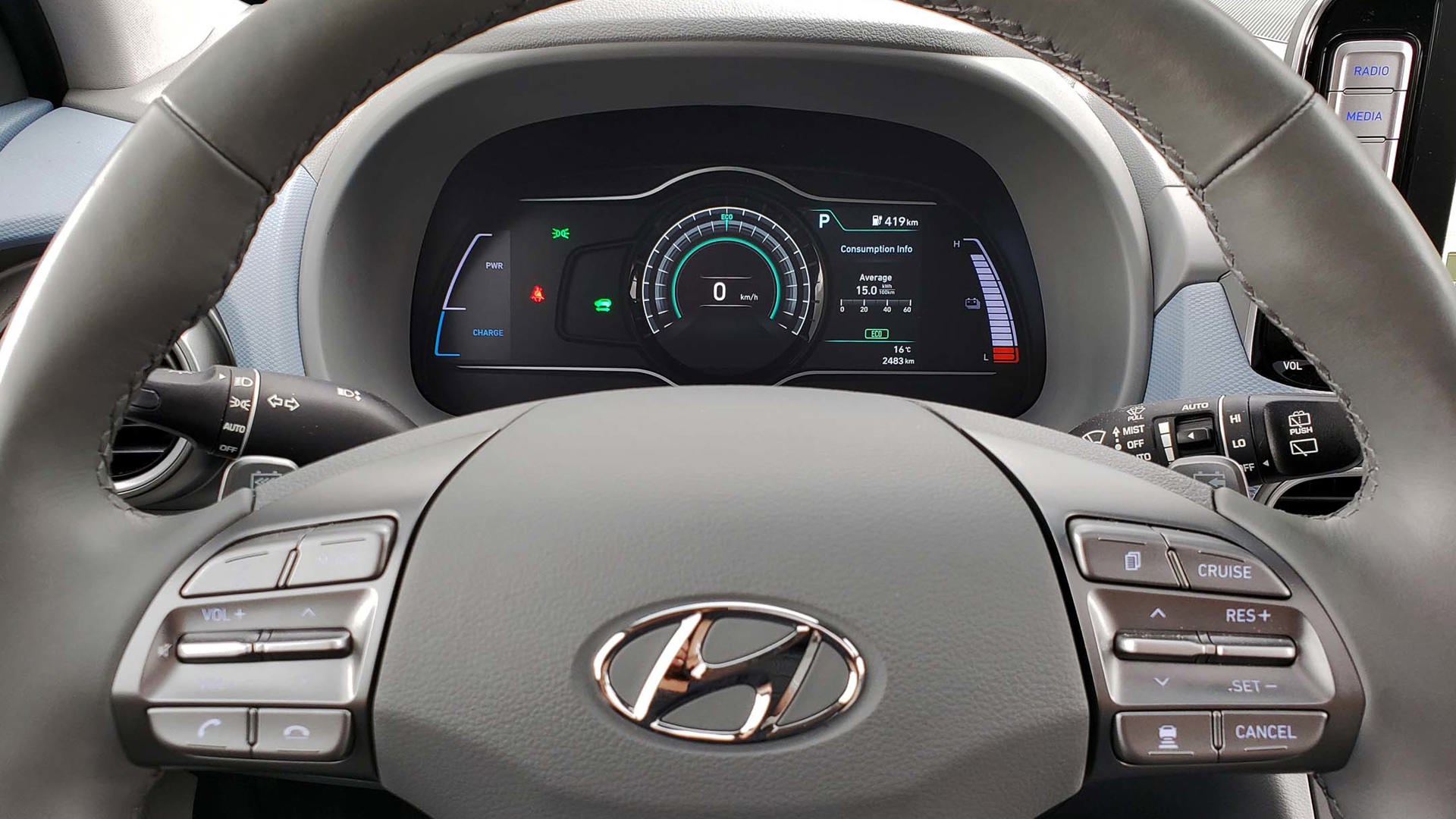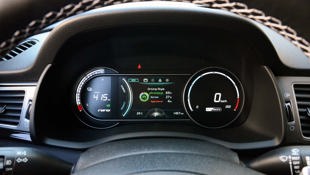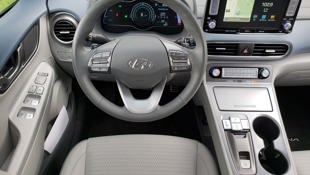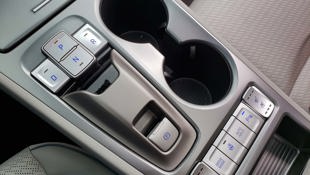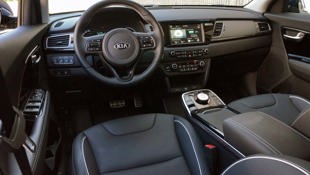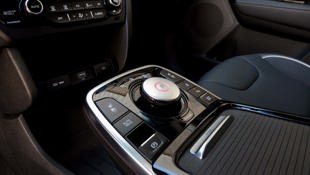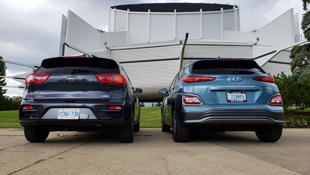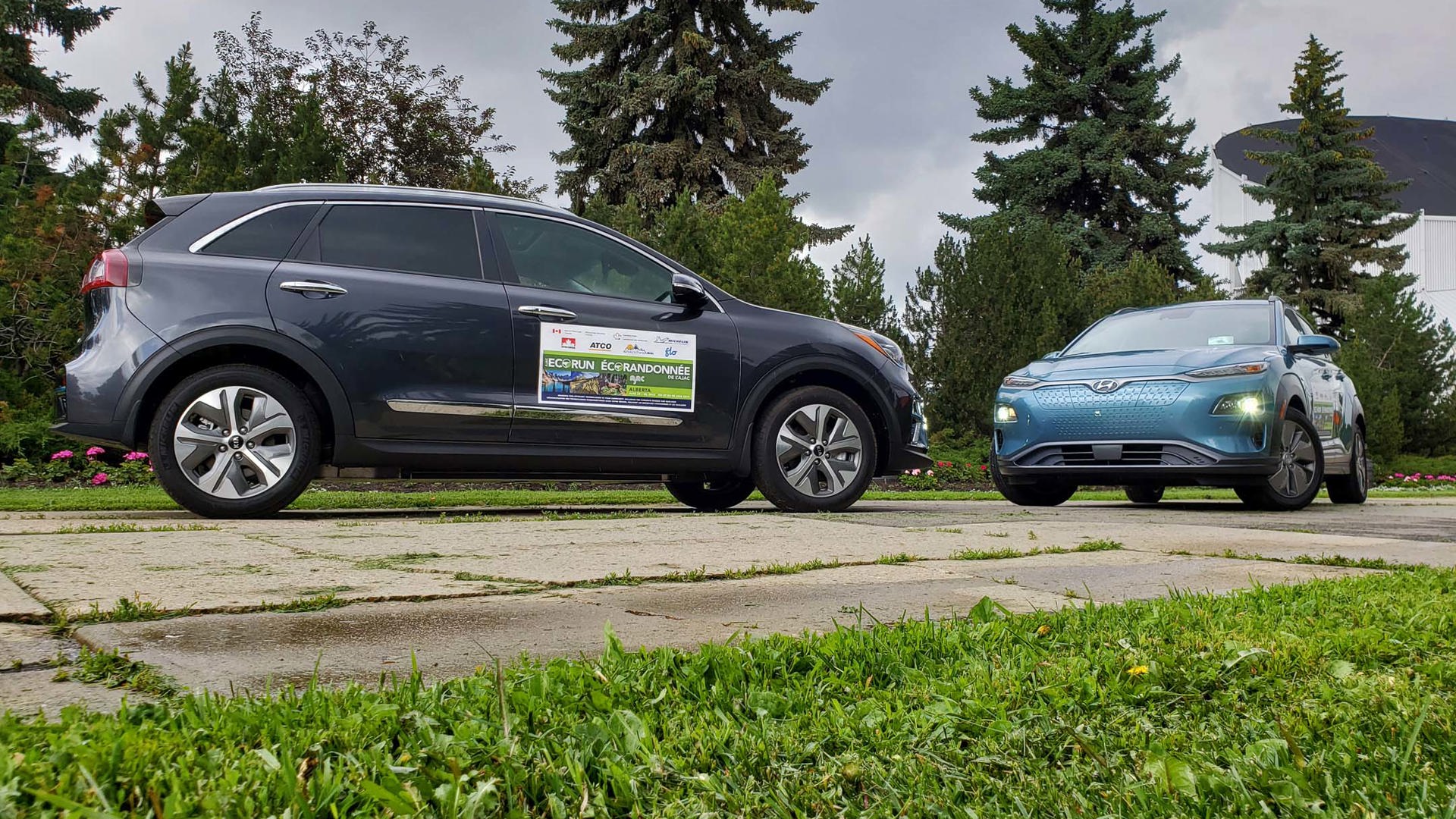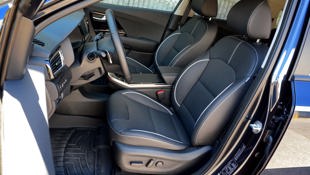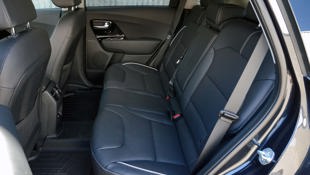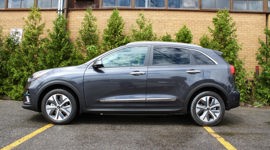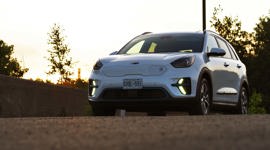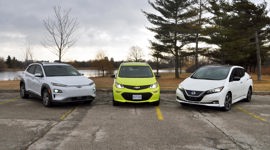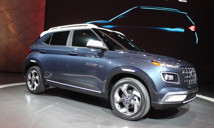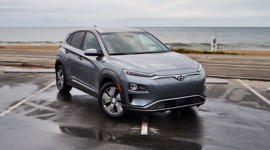Comparison Data
|
2019 Hyundai Kona Electric Ultimate
|
2019 Kia Niro EV SX Touring
|
|---|---|
|
Engine Displacement
150 kW electric motor
|
150 kW electric motor
|
|
Engine Cylinders
n/a
|
n/a
|
|
Peak Horsepower
201 hp
|
201 hp
|
|
Peak Torque
290 lb-ft
|
291 lb-ft
|
|
Fuel Economy
1.8/2.2/2.0 Le/100 km, 16.2/19.3/17.4 kWh/100 km cty/hwy/cmb
|
1.9/2.6/2.1 Le/100 km, 16.8/20.5/18.6 kWh/100 km cty/hwy/cmb
|
|
Cargo Space
544 / 1,296 L seats down
|
629 / 1,804 L seats down
|
|
Base Price
$51,999
|
$53,995
|
|
A/C Tax
$100
|
$100
|
|
Destination Fee
$1,805
|
$1,795
|
|
Price as Tested
$54,104
|
$55,890
|
|
Optional Equipment
$200 – Ceramic Blue paint $200
|
None
|
Did you open this story while thinking, “Why would anyone bother to compare these two cars? Aren’t they essentially the same?”
Once upon a time, I might have made the same assumption. After all, it’s true that the Kona Electric and Niro EV are made by connected-but-distinct Korean automakers Hyundai and Kia respectively. They share a lot of fundamentals such as motors, batteries, and infotainment systems, and they’re also very close on price point.
But these two companies go to great lengths to differentiate their products, and these breakout battery electric crossovers are no exception. They’re different enough in how they look, feel, and operate to merit examination by those who have both cars on their EV shopping lists.
The 2019 Kia Niro EV and the 2019 Hyundai Kona Electric start at just under $45,000: $44,995 for the Niro and $44,999 for the Kona, to be specific. This is no coincidence: a base price of $45,000 is a requirement for a vehicle of this body style and size to qualify for the federal iZEV purchase incentive.
The Kona Electric featured here is the more feature-intensive Ultimate trim, which is priced at $54,104 before the rebate is applied, including a $1,805 destination charge and a $200 premium for the Ceramic Blue paint. The Kona Electric qualifies for the full $5,000 federal incentive, which is applied after sales tax is calculated.
For the Niro EV in this SX Touring model, which is also the top of the line, the invoice rings up at $55,890 before the rebate including a $1,795 delivery charge. The only thing that can add to that price apart from accessories is a $200 charge for choosing a colour other than black. The Kia Canada website doesn’t show how much the vehicle would cost after the federal rebate is applied, but it also qualifies for the full $5,000 incentive.
If you live in Quebec or British Columbia, the provincial incentives are stackable on the federal rebate to bring those prices down even further: by up to $8,000 and $3,000 in each province respectively.
Managing Editor of autoTRADER.ca Michael Bettencourt and I tested these cars at AJAC’s 2019 EcoRun, which was held early this summer in Alberta. After driving them on similar routes in similar weather conditions, we were surprised to be left with more varied impressions than we expected.
Powertrains and Drive Feel
Hyundai Kona: 9/10
Kia Niro: 8/10
You would expect the score to be identical here, wouldn’t you?
After all, the 150 kW electric motor, which equates to 201 hp, is shared between the Kona and the Niro. (Interestingly, the Kona’s declared torque is just a tick lower, at 290 lb-ft to the Niro’s 291 lb-ft, but that’s really picking nits.) And both cars can charge their 64 kWh lithium-ion polymer batteries to 80 percent in under an hour at a 100 kW fast charger.
But one key difference between the two is in the stated range. The Kona says it can cover 415 km in a single charge, while the Niro stops short of that at 385 km. These numbers can vary in real-world use, of course, and a 30 km variation isn’t likely to make much of a difference to most users. But on-paper numbers matter, and the Kona’s ability to cross the 400 km threshold is likely to be a big deal to a lot of potential buyers. Why might the Niro’s figure be lower? Curb weight is a factor: the Niro rings in at 1,764 kg as opposed to the Kona’s 1,685 kg. To be fair, though, it offered us a higher total range in our early summer testing: we had 411 km left on the Kia, according to its dashboard display, after driving it to our photography location, which means it would have topped out a little higher than that.
However, the Kona provides tools that help that range go further. Both cars have multiple drive modes and make use of regenerative braking, but the Kona’s ECO+ mode takes charge conservation to another level with a speed limiter, multiple adjustable tiers for braking strength, and real-time feedback on how much charge your braking style is recovering. I wish every EV had features like this; it succeeds in making efficient driving fun.
Styling
Hyundai Kona: 6.5/10
Kia Niro: 6.5/10
Okay, let’s be straight: neither one of these cars is beautiful. It’s becoming the norm for electric cars to look more like regular cars than like spaceships, and consumers – in North America, at least – tend to like it that way. The designers who worked on these cars appear to have missed the memo.
“The slit-like headlights of the Kona lend it a cat-like stare,” Bettencourt says. “The textured pattern that runs over the entire grille and front bumper area may be a touch too futuristic for some, though; and amongst these two, the Kia is the more conventional-looking.”
If forced to choose, I’d agree that the Niro does the best job of looking like its gas-powered equivalent and the least “Look at how green I am!” That said, it comes in only four rather drab exterior paint colours – black, white, grey, and dark blue – and only a single interior choice, which is black on black.
The Kona, eccentric as it is, comes in a few more muted colours plus the Ceramic Blue of our tester and a no-extra-charge red. On top of that, the Ceramic Blue and Galactic Grey premium exteriors offer the option of this visually interesting “Pebble Blue with Grey Leather” interior. I might be inclined to skip it because I wear dark blue jeans too often and the silver finish on the centre console reflects a lot of sunlight when it hits at the wrong angle, but I appreciate that the choice is there. And it calls attention to what I feel is a better material quality in the Kona than in the Niro, though Bettencourt disagrees on this point. “The slightly different hues inside provide some visual variety that’s lacking in the Niro EV,” he says. “The head-up display offers a bit of an upscale feel over the Niro EV, too. But it looked and felt slightly cheaper to me overall.”
Bettencourt and I agree that neither shifter style is ideal. I like the Niro’s dial shifter a little more than the button shifter in the Kona, if for no other reason than that it feels less prone to mistakes. The Niro’s centre console design is also somewhat more attractive, and the button layout is more intuitive. Where the Kona does much better is in its instrument cluster layout, which is more digitized and provides plenty of information in a way that’s easy to glean at a glance. The Niro’s gauges looked like they were carried over from an older model – and they were, so that makes sense, but updating them for an otherwise very modern car would have been a nice touch.
And in what’s possibly the quirkiest difference of all, the Kona makes a unique sound during operation. It doesn’t bother me in the slightest, but for Bettencourt it’s like nails on a chalkboard. “The strange low-speed hum that sounds like a train would drive me batty in this car,” he says. “I wish there was a button to turn it off, but I’d be hunting for the fuse if I owned it.”
Cargo and Storage
Hyundai Kona: 6/10
Kia Niro: 7/10
Both of these vehicles fall into the subcompact crossover category, which isn’t generally selected for its vast amounts of space. That said, the Niro does offer more cargo storage at 629 litres with the rear seats up and 1,804 litres with the seats down, as opposed to the Kona’s 544 and 1,296 litres respectively. This spaciousness carries over to the Niro’s cabin, which feels roomier than it looks.
Infotainment and Connectivity
Hyundai Kona: 9/10
Kia Niro: 9/10
Hyundai’s excellent infotainment system is shared across the Hyundai and Kia brands, so there’s not much difference to be called out here. In both cars, the system is easy to use with an intuitive layout, plenty of radio presets, and included Android Auto and Apple CarPlay functionality. One difference that’s worth mentioning, though: the Niro has a handy little integrated shelf that’s a natural place to store a smartphone. The Kona has no such built-in space.
Safety and Other Features
Hyundai Kona: 8/10
Kia Niro: 7.5/10
These models, the Kona Ultimate and Niro SX Touring, are loaded to the hilt with features. Both come with heated front seats and steering wheel – though if you’re shopping the base models, note that the Niro doesn’t have these while the Kona does – as well as heated exterior mirrors and ventilated front seats. What shocks me is that the Niro SX Touring includes heated rear seats, while the Kona Ultimate doesn’t. It’s more efficient to heat a passenger with an electric seat than with the HVAC system in an EV, so this is a bizarre omission on Hyundai’s part.
If you’re shopping base models, the Kona has more equipment than the Niro, but they more or less even out in the top trims. Both include blind spot detection, lane-keep assist, forward collision avoidance assist, and rear cross-traffic alert. The Kona also has high-beam assist and a driver attention warning system.
The Verdict
Hyundai Kona: 38.5/50
Kia Niro: 38/50
The differences are more dramatic than these numbers convey, but they add up to the Kona Electric winning this comparison by just a tick. The challenge, it seems, might be finding one. The Kona Electric is in high enough demand that inventory is low across the country.
Is it worth waiting for, over the Niro EV or any other battery-electric? Very possibly, if the strengths highlighted here resonate with you. But if the cargo space and long features list make the Niro seem more appealing, it makes a stout choice for the right buyer, too.
More than anything, as far as the EV market is concerned, it certainly is nice to have options.
